Managemen t and business department Financial Management Oksana


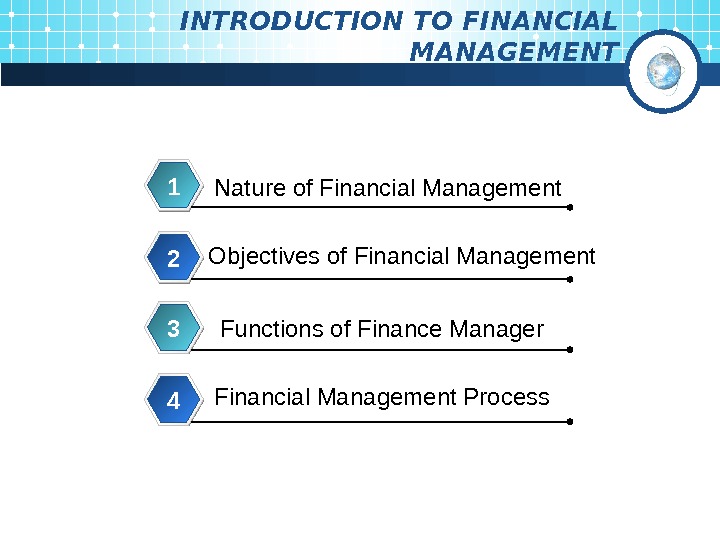
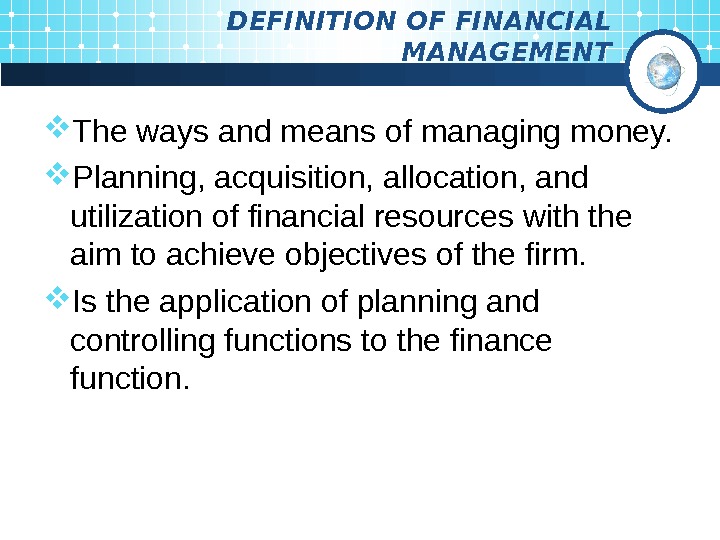
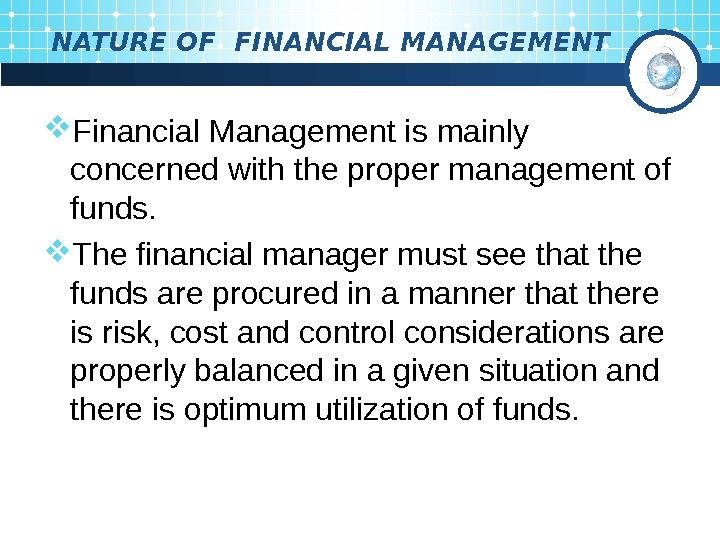
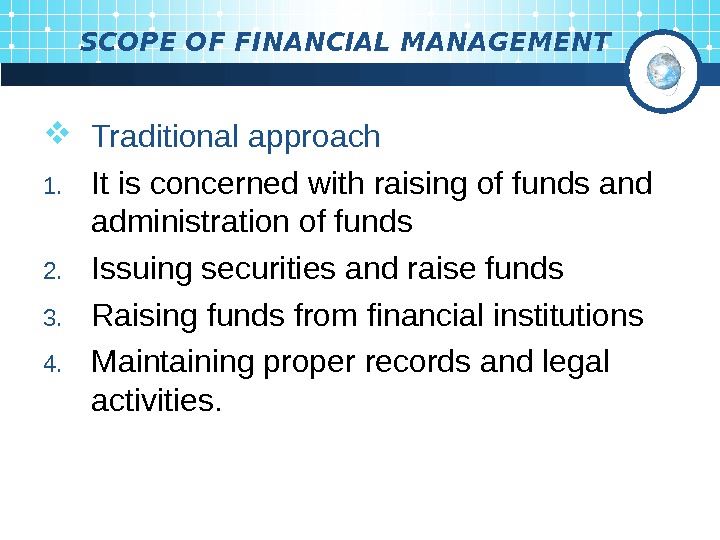
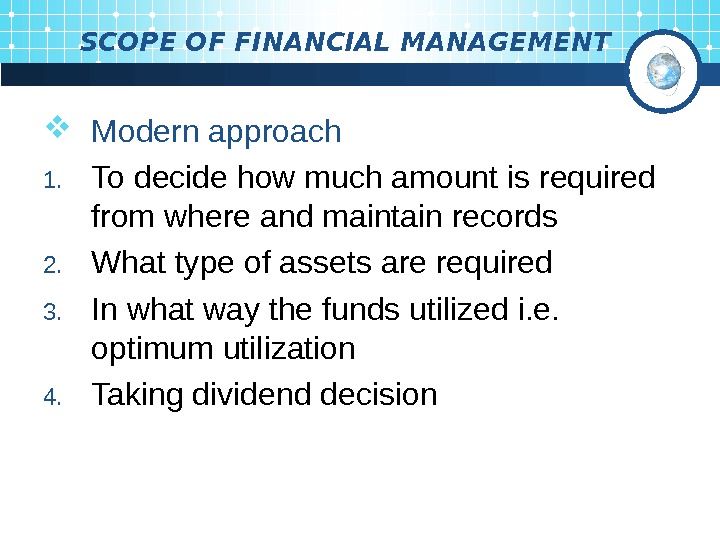
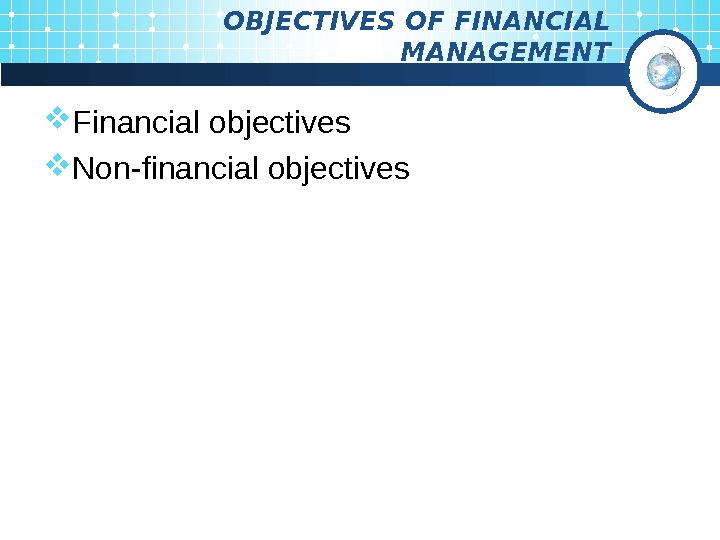
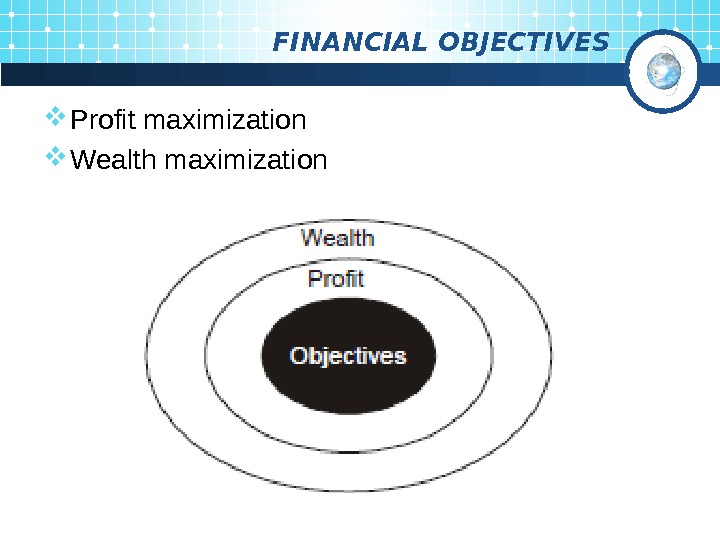
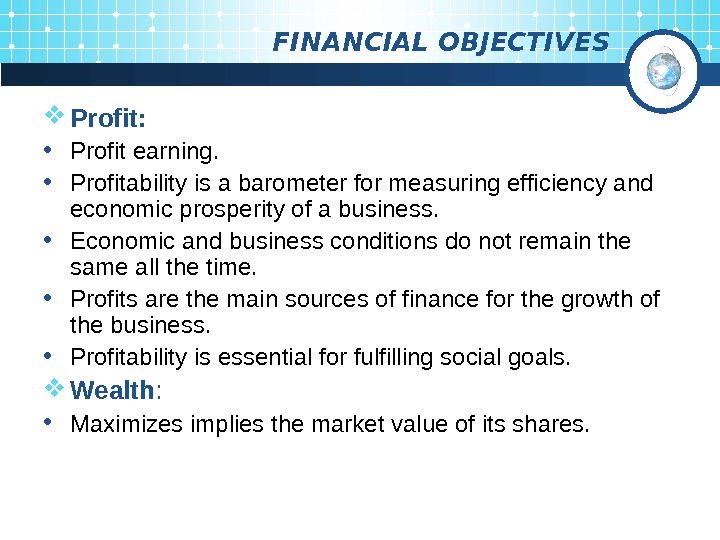
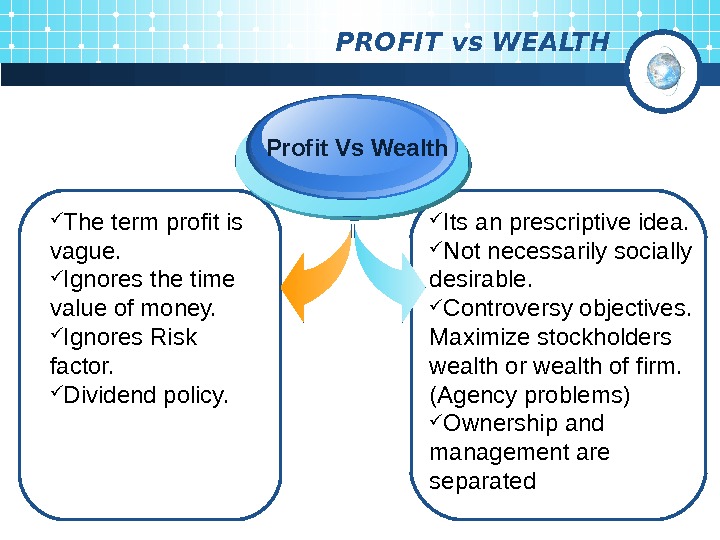
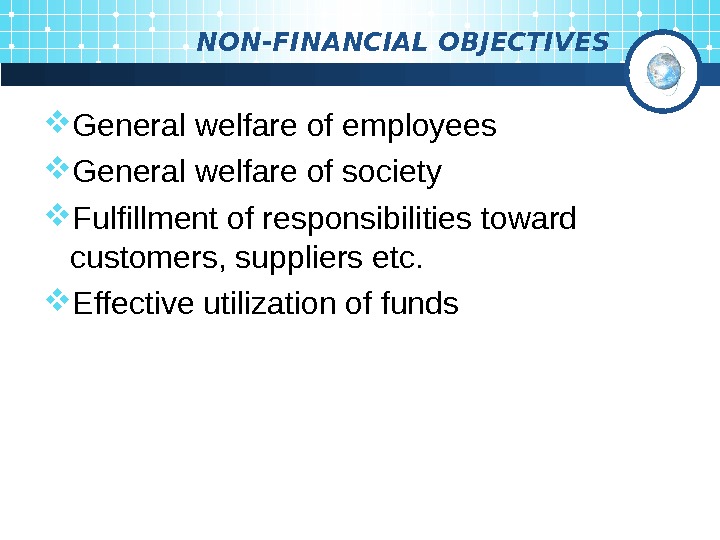
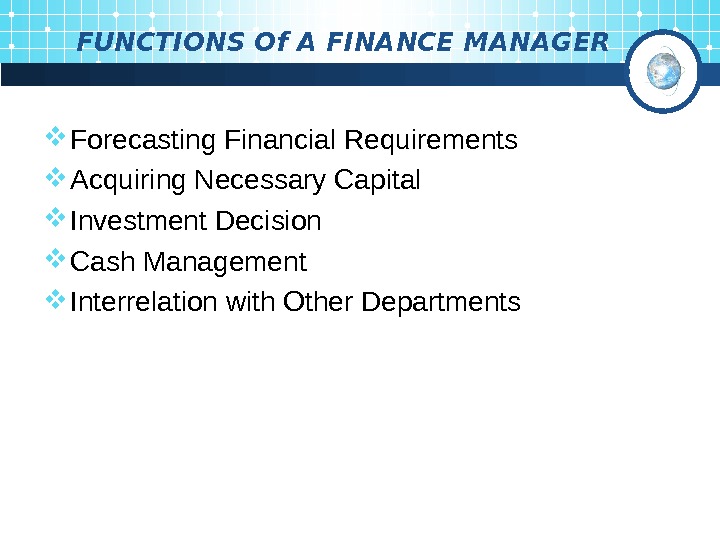
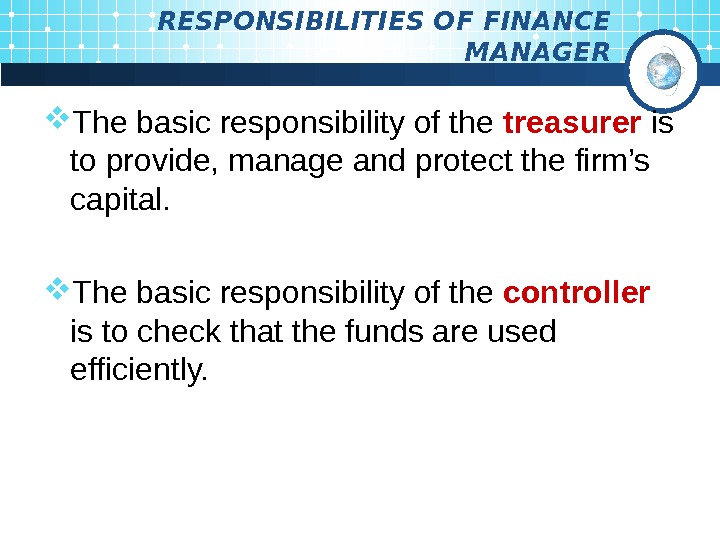
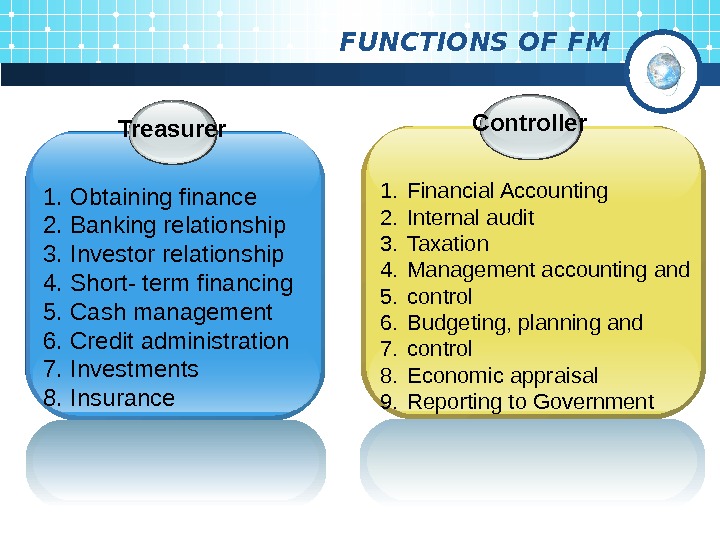
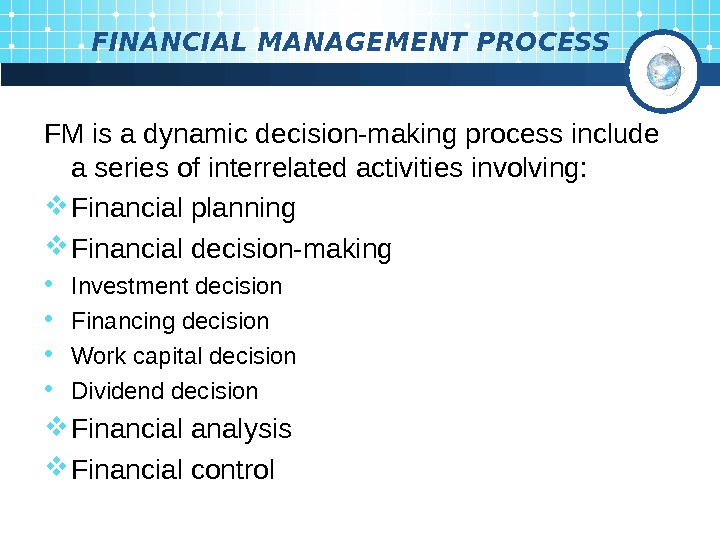
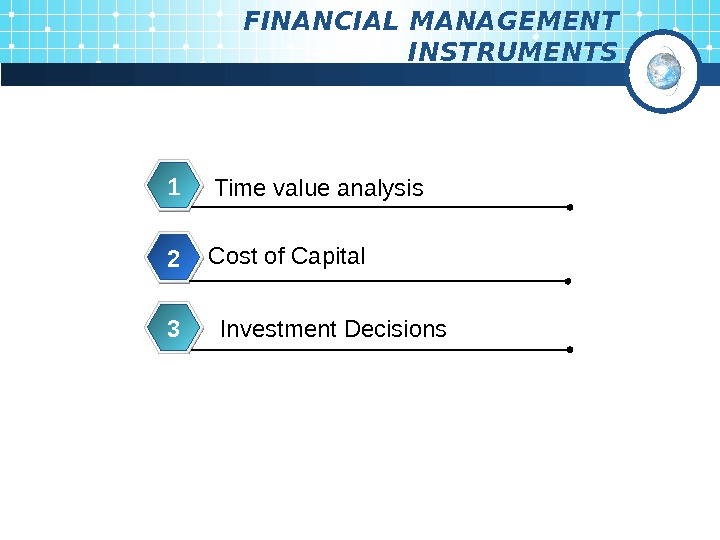
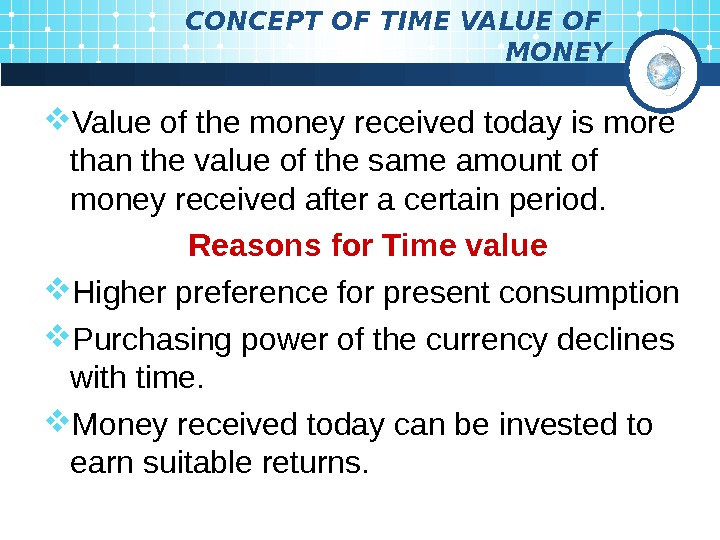
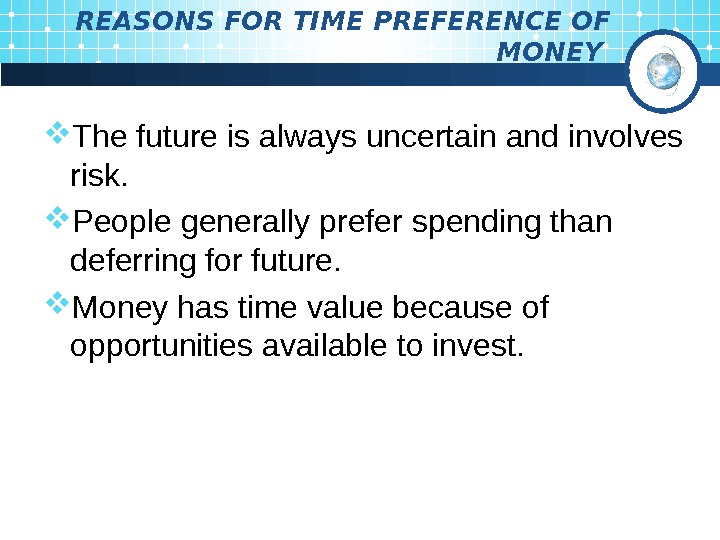
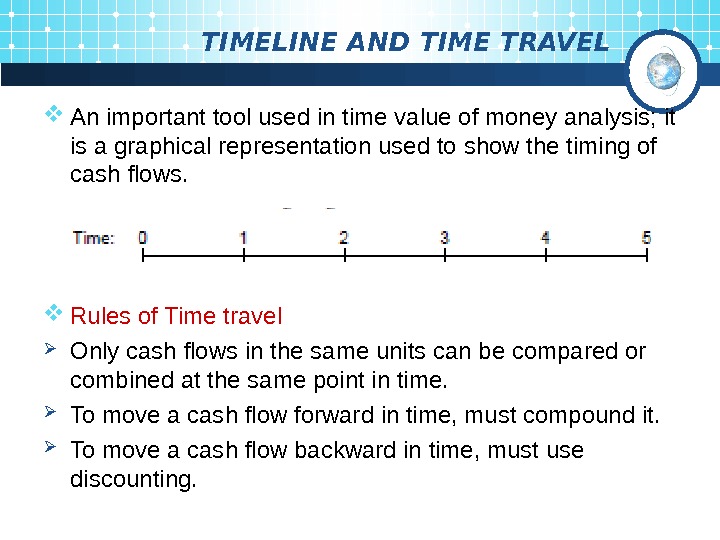
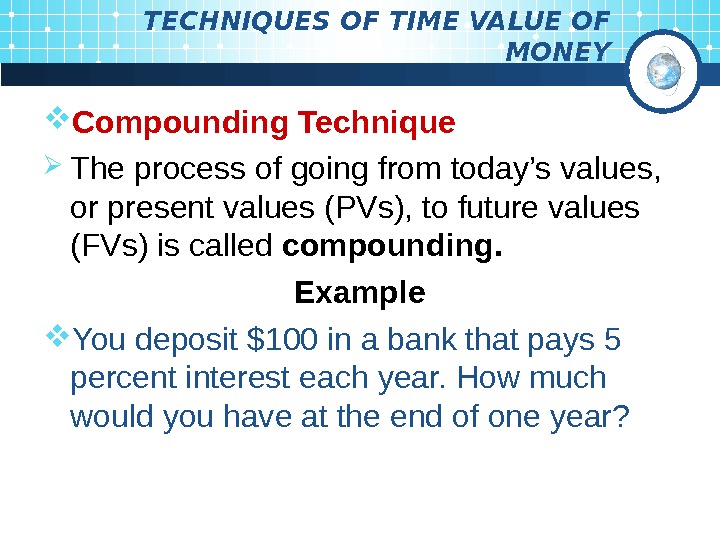
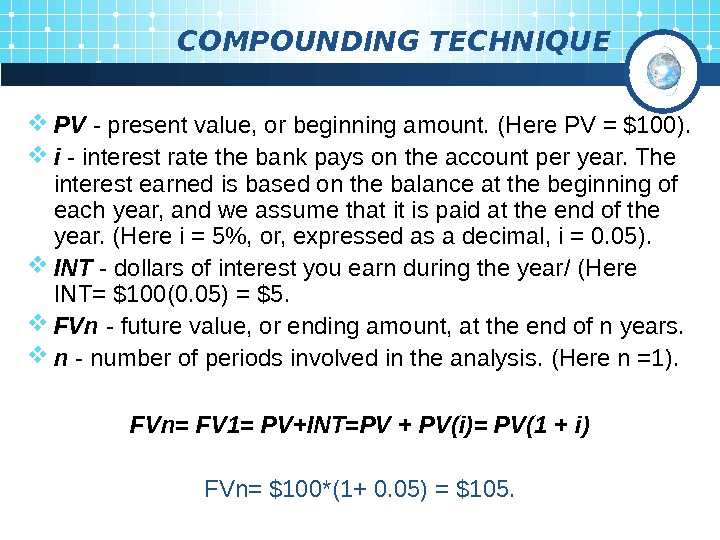
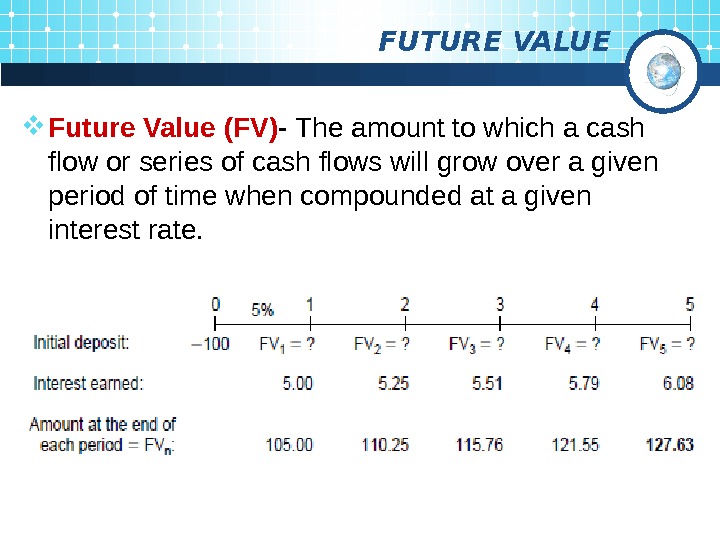
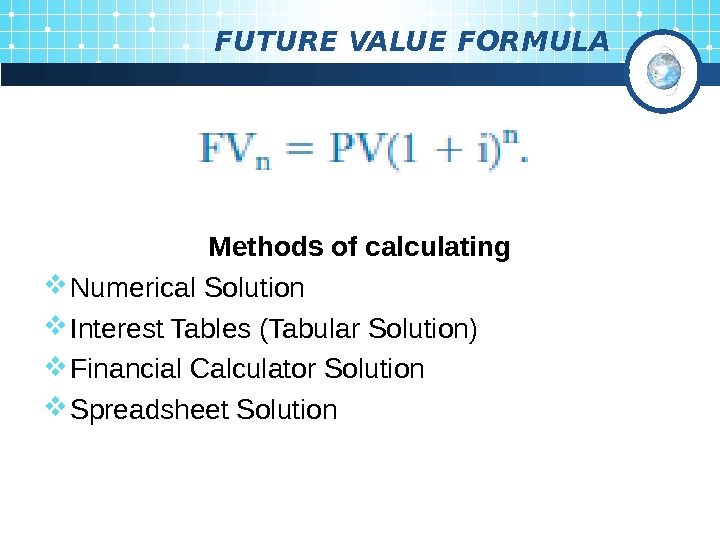
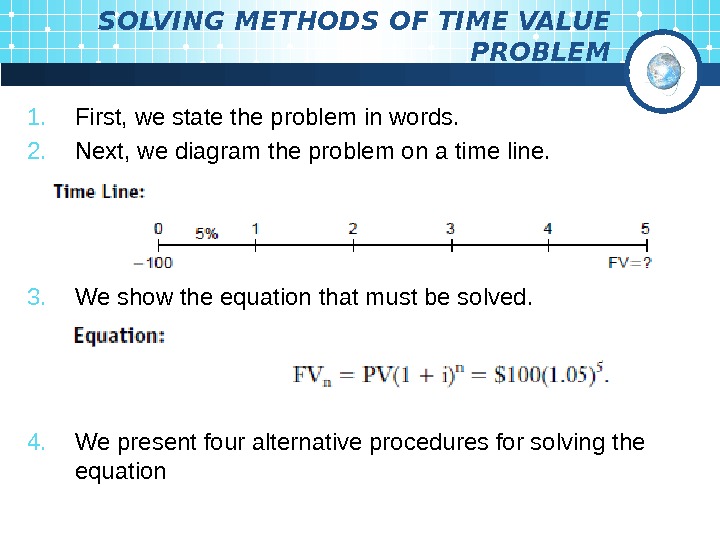
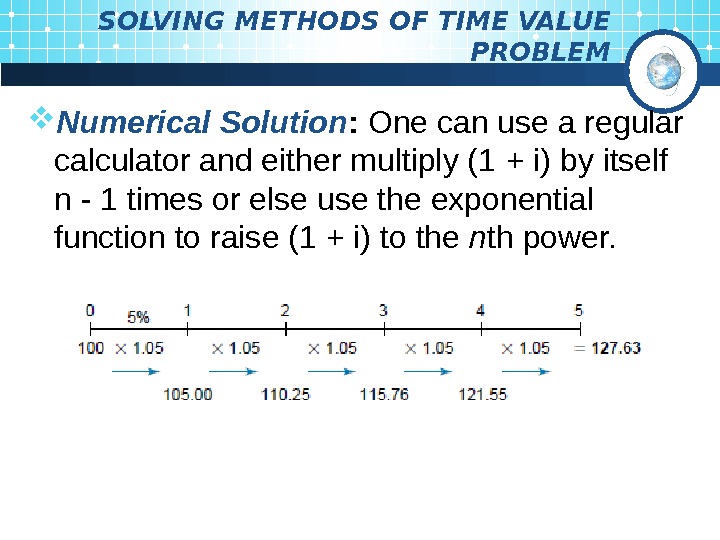
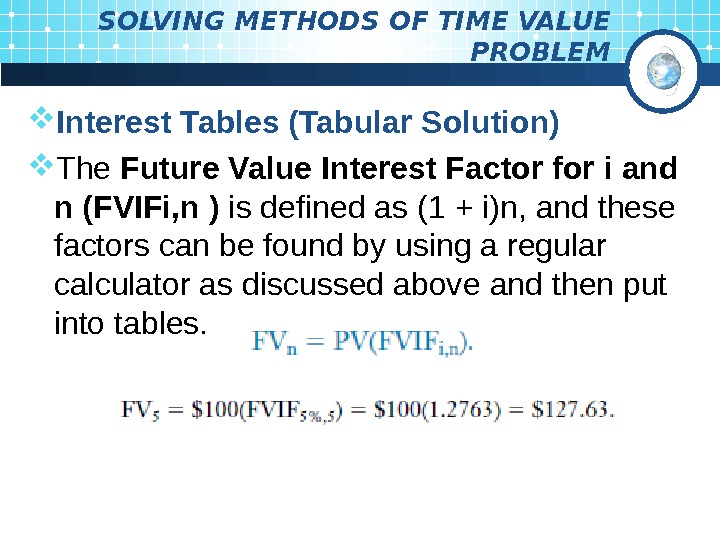
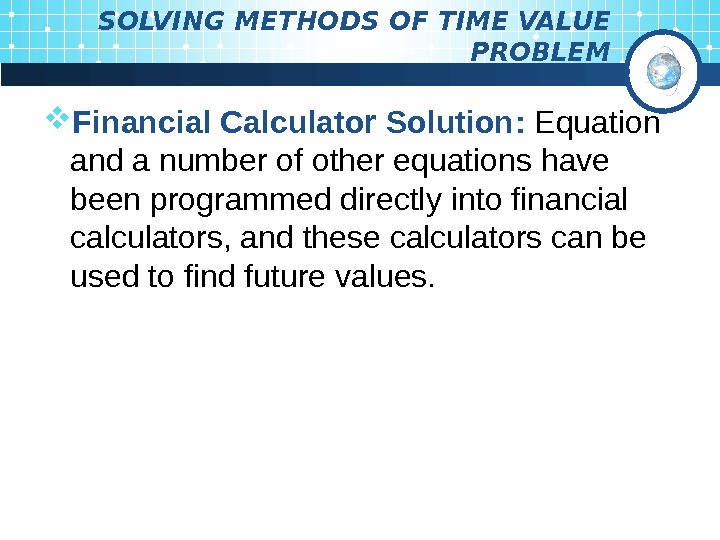
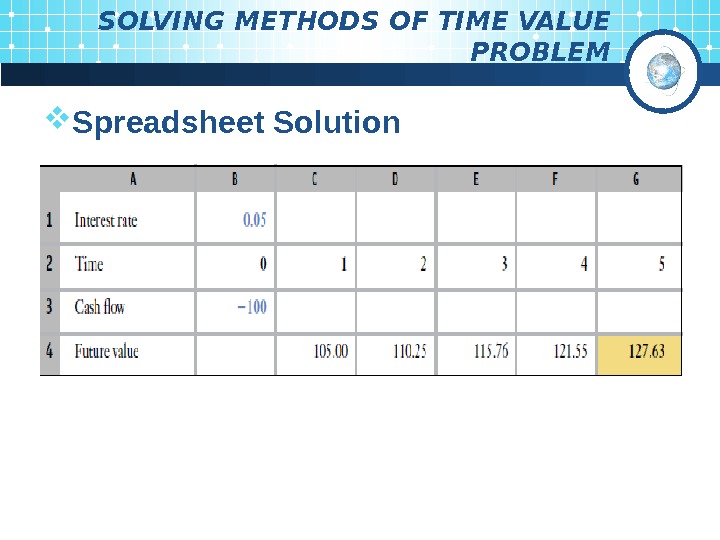
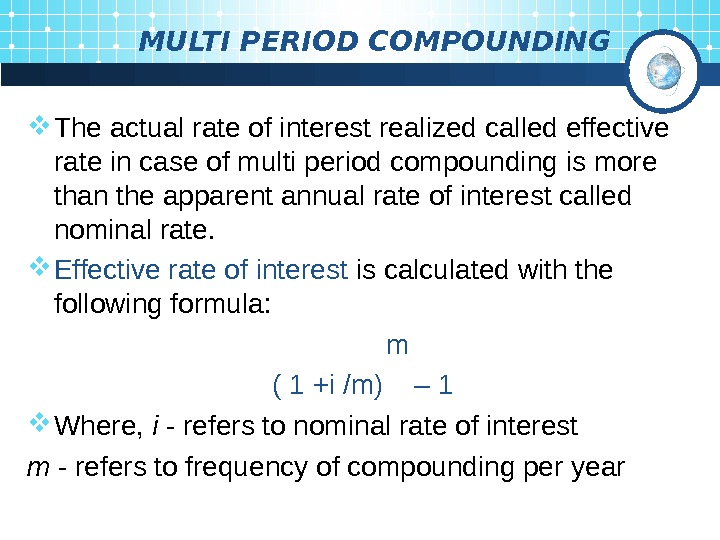
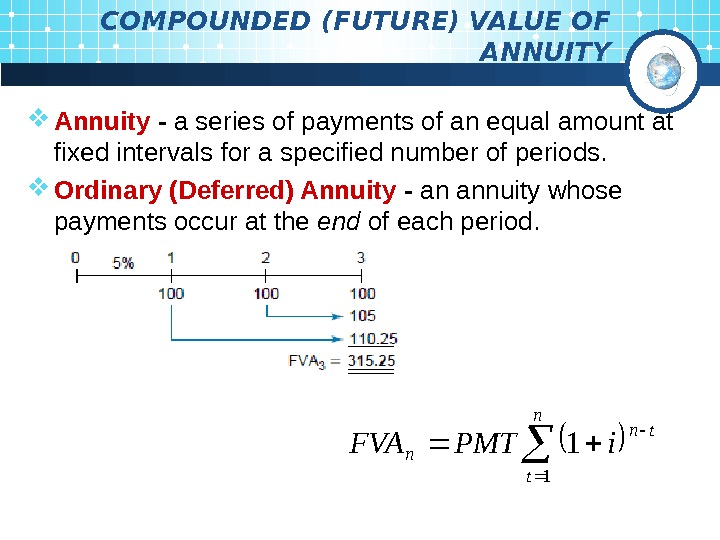
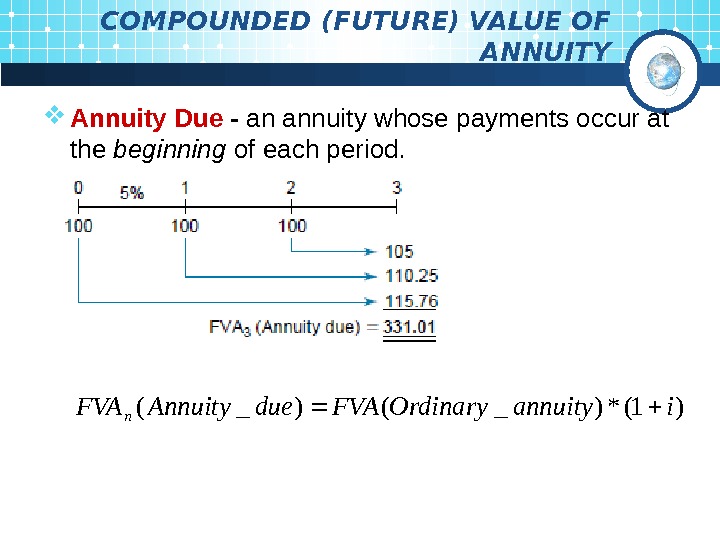
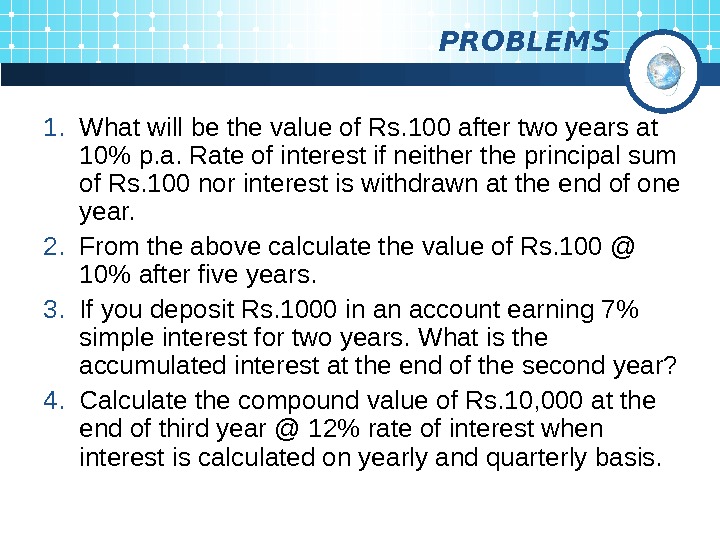
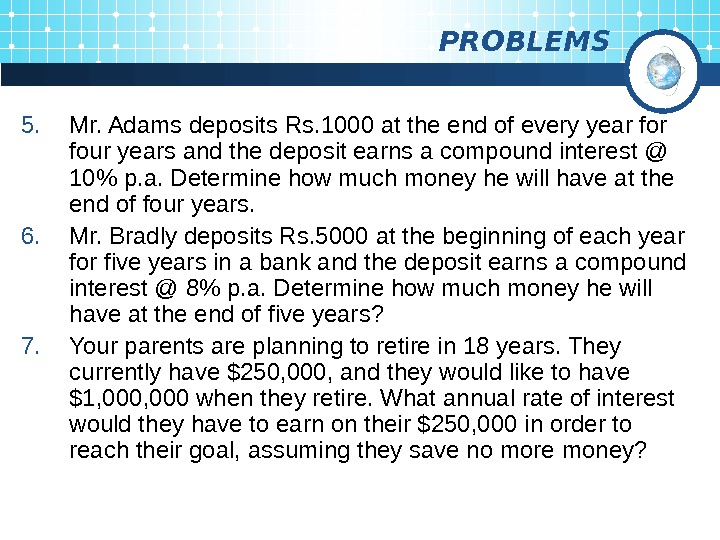
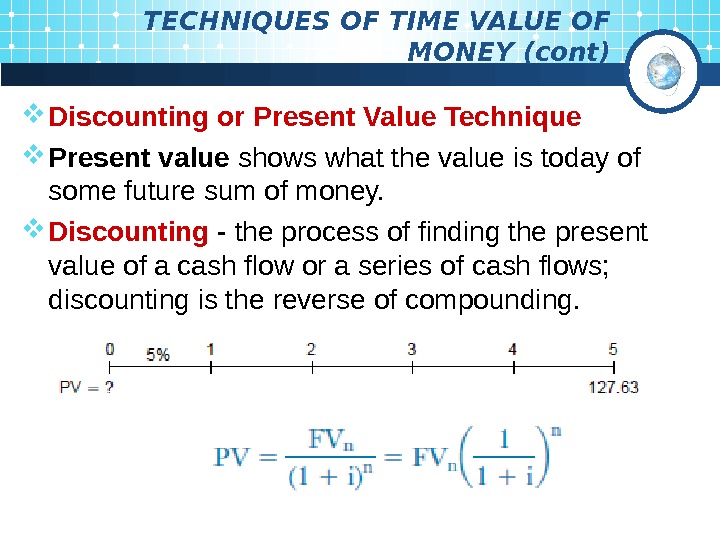
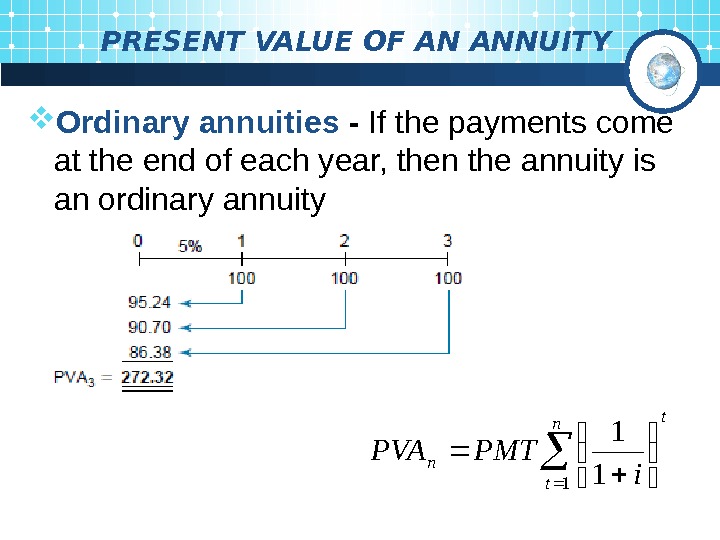
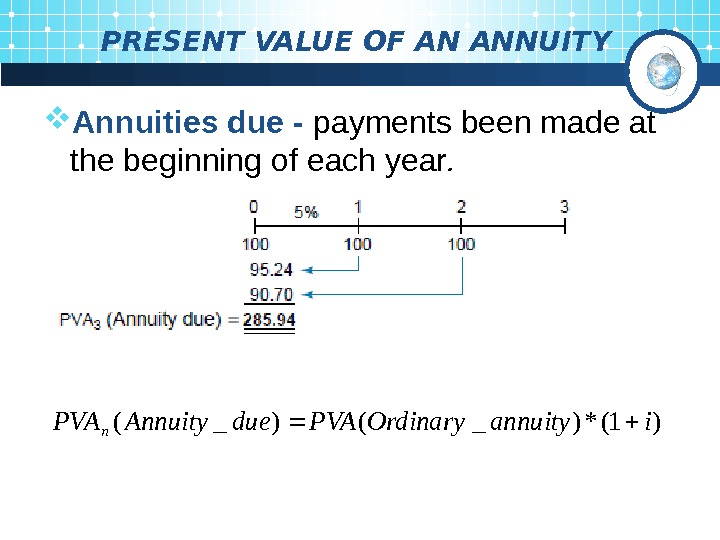

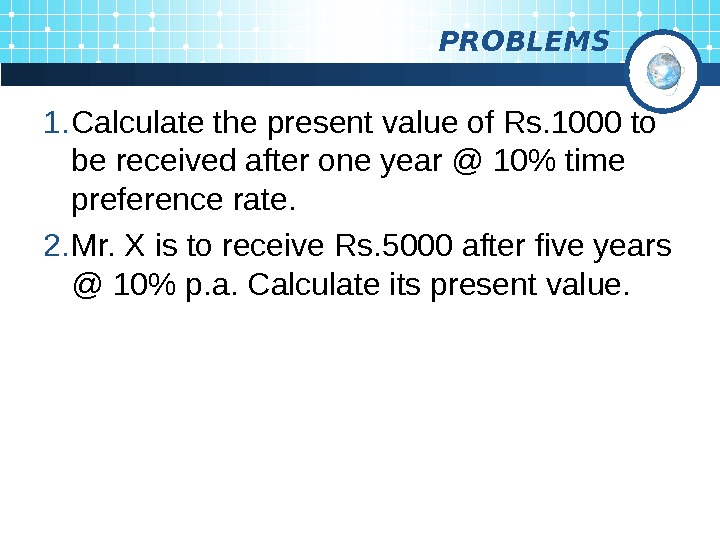
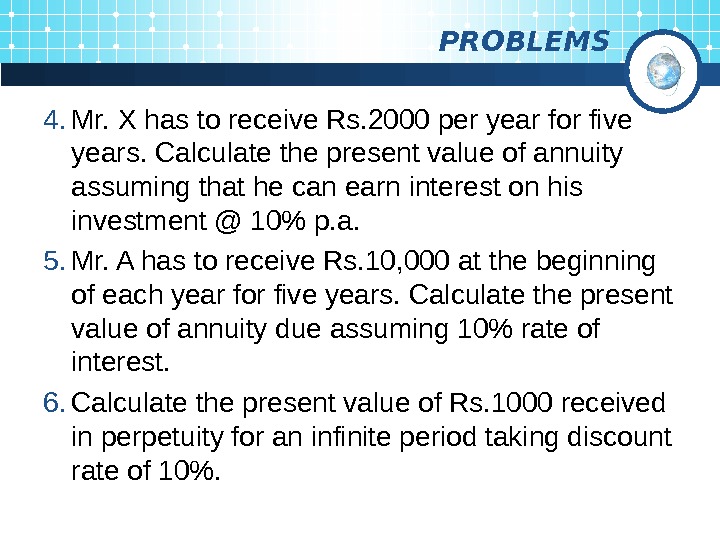
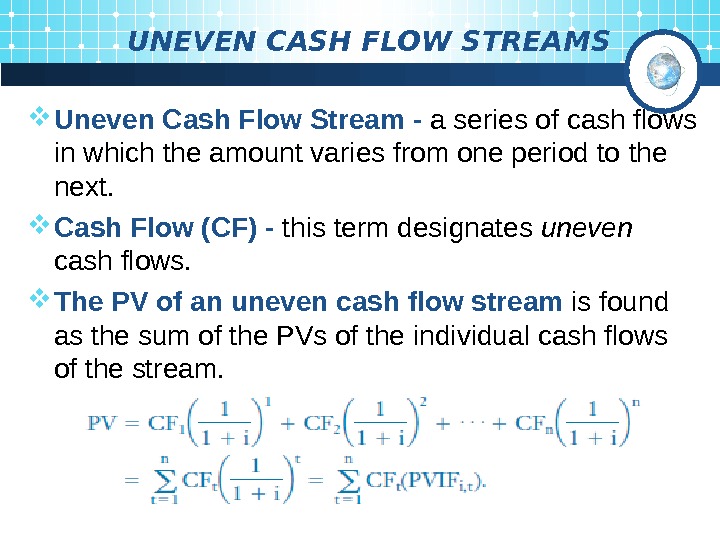
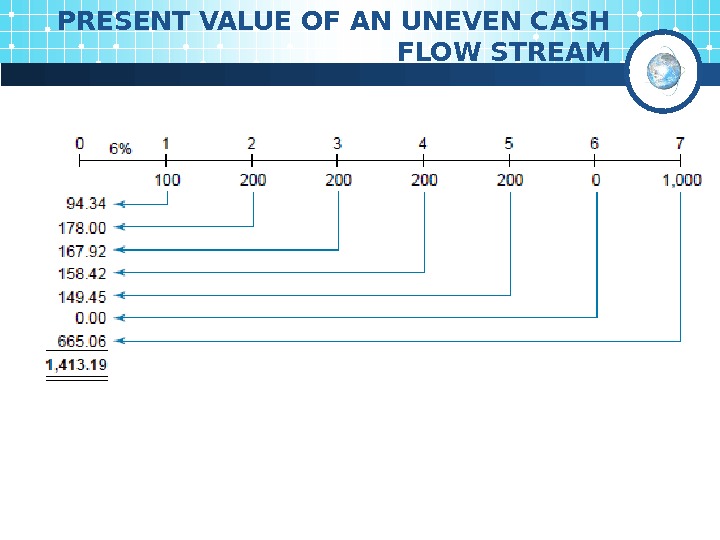
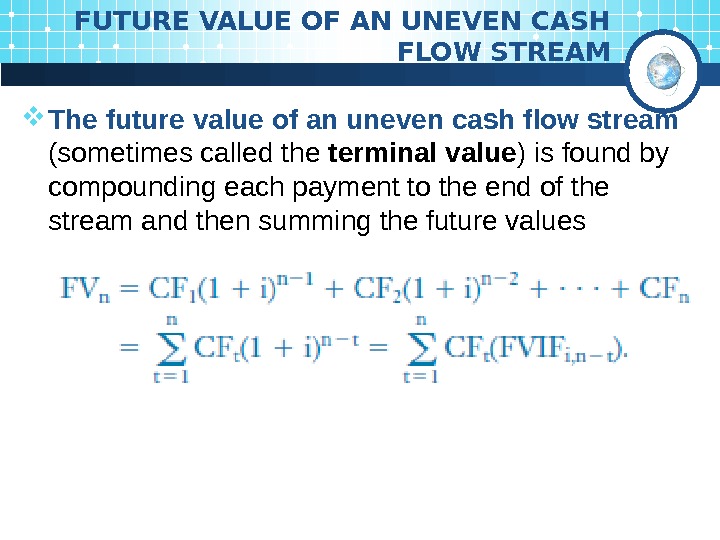
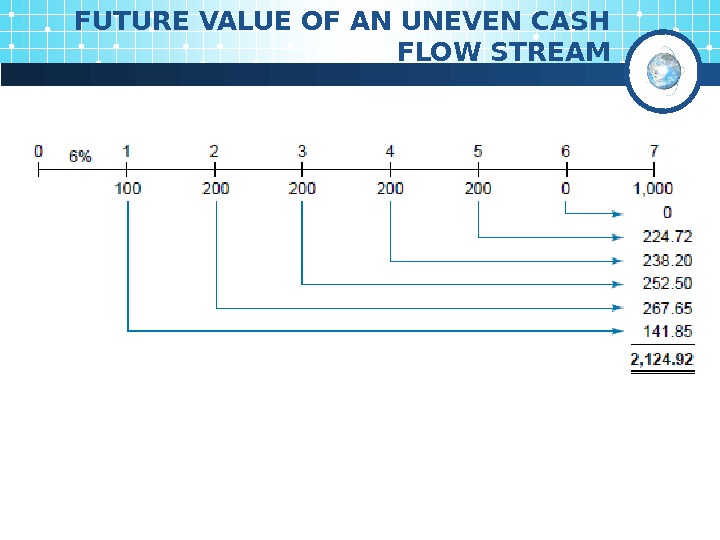
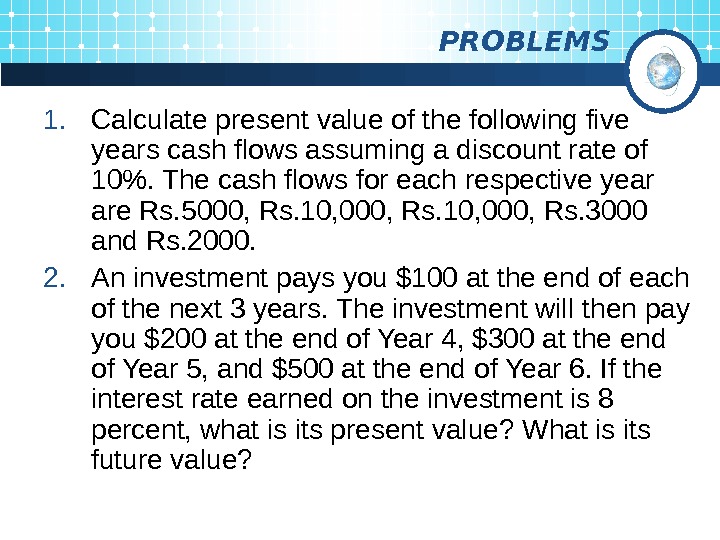
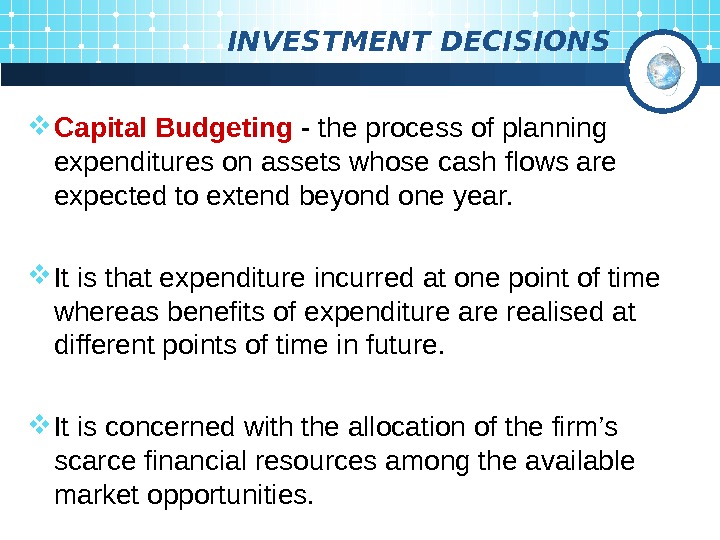
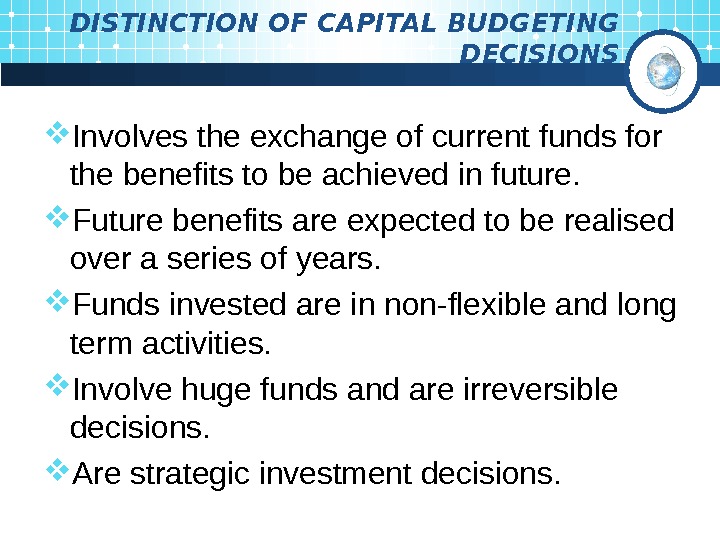
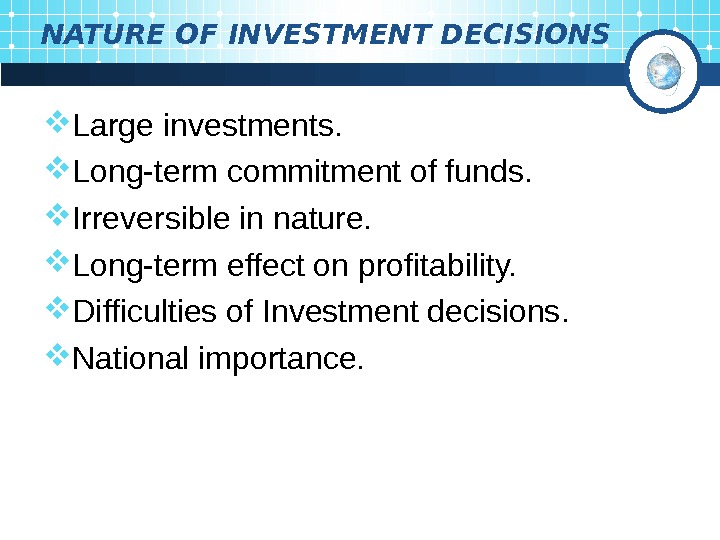
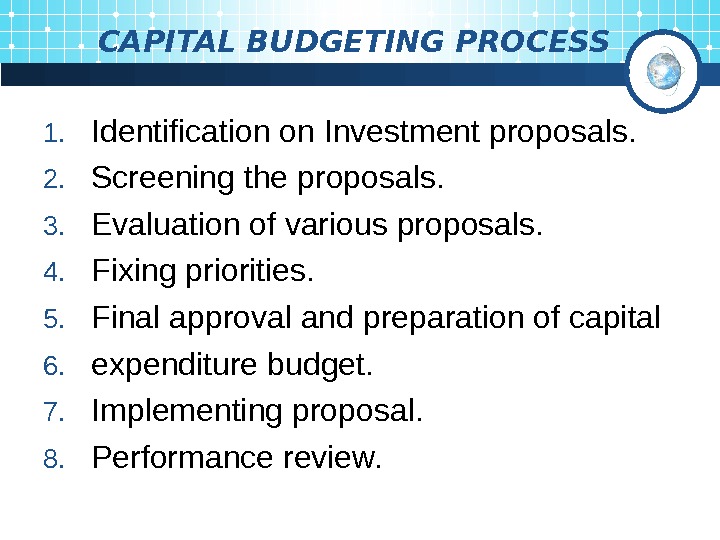
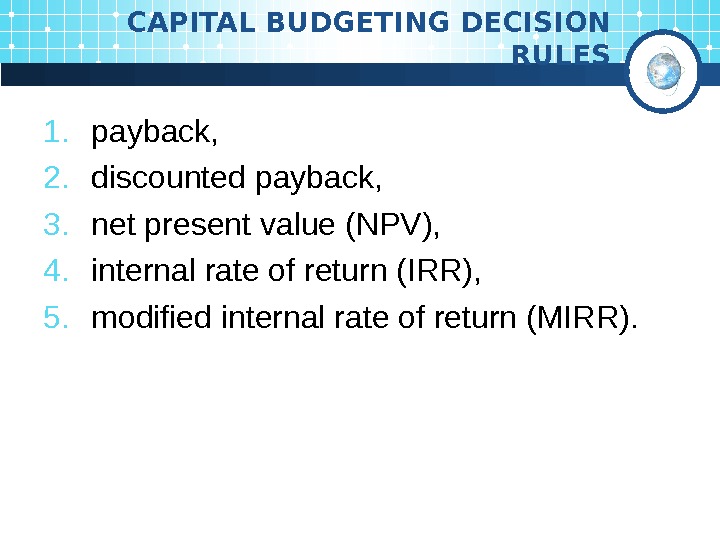
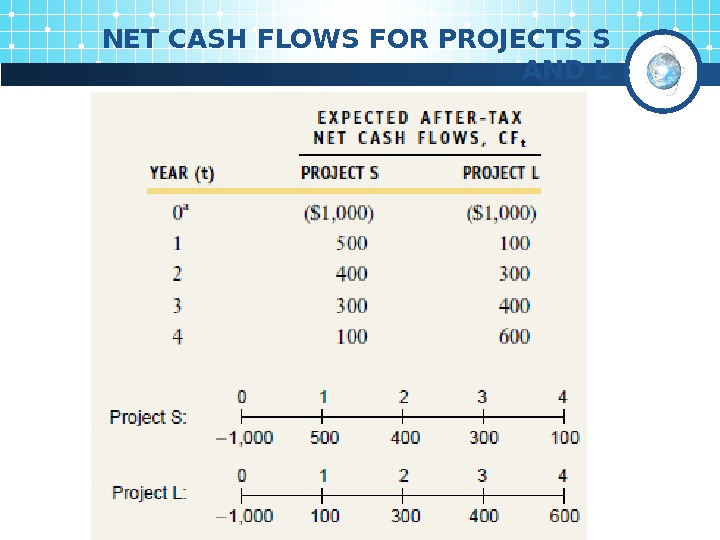
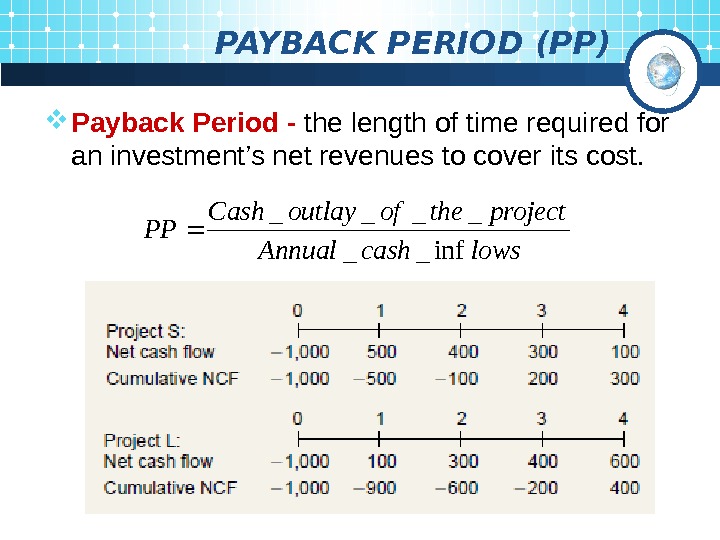
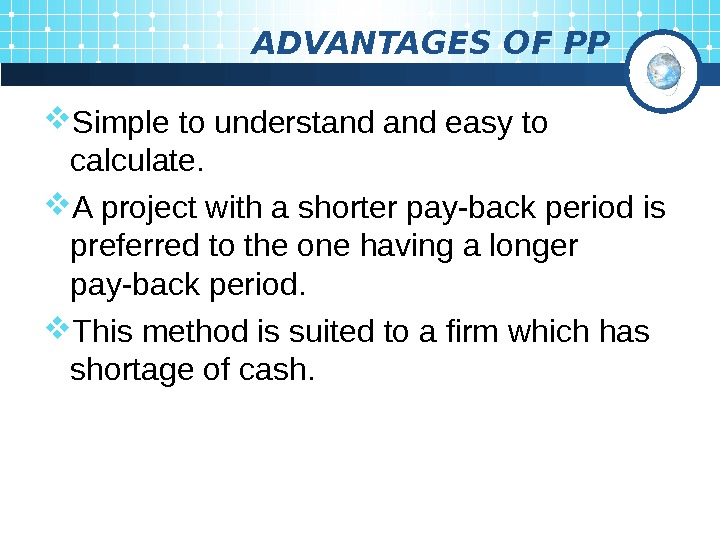
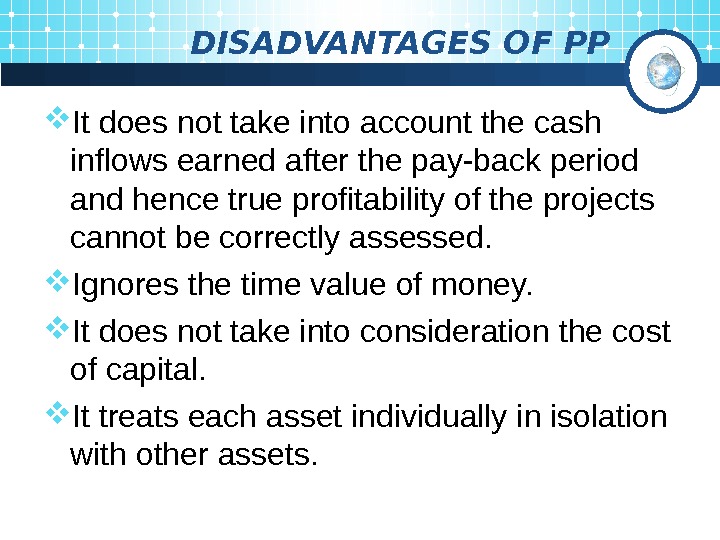
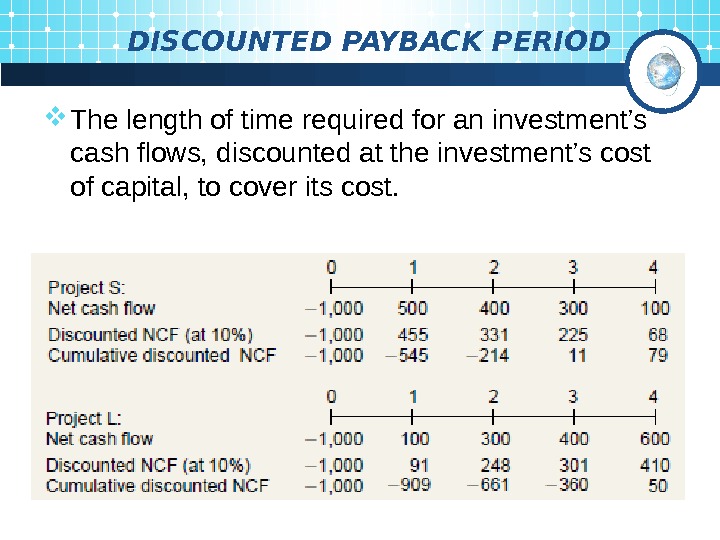
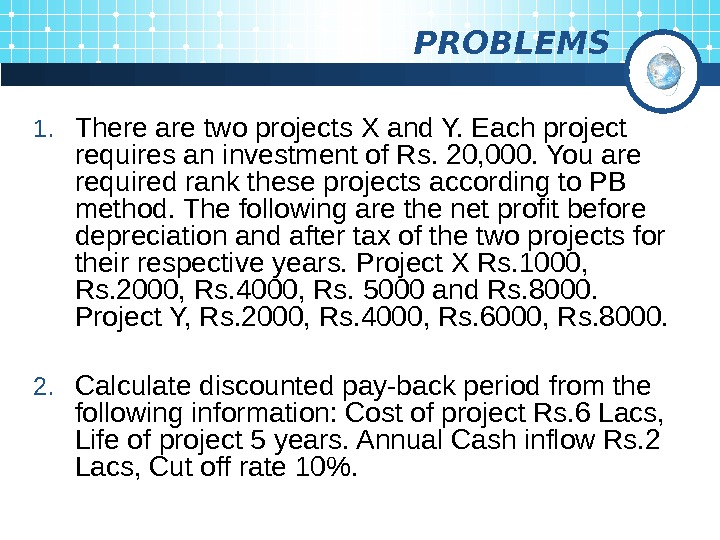
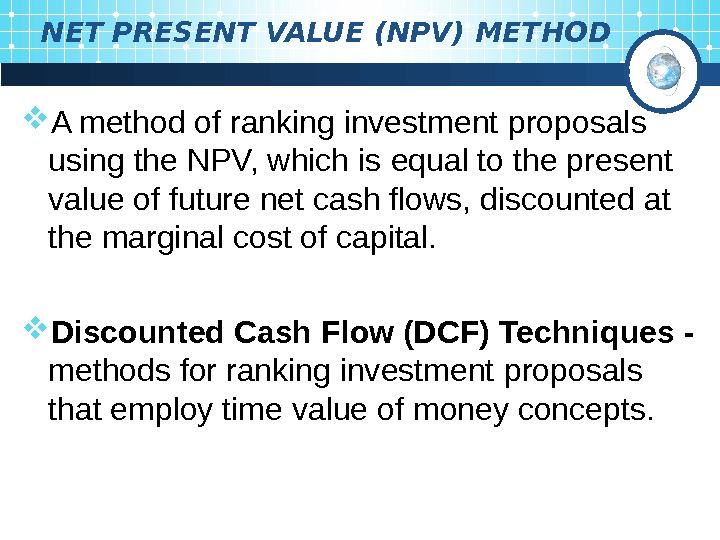
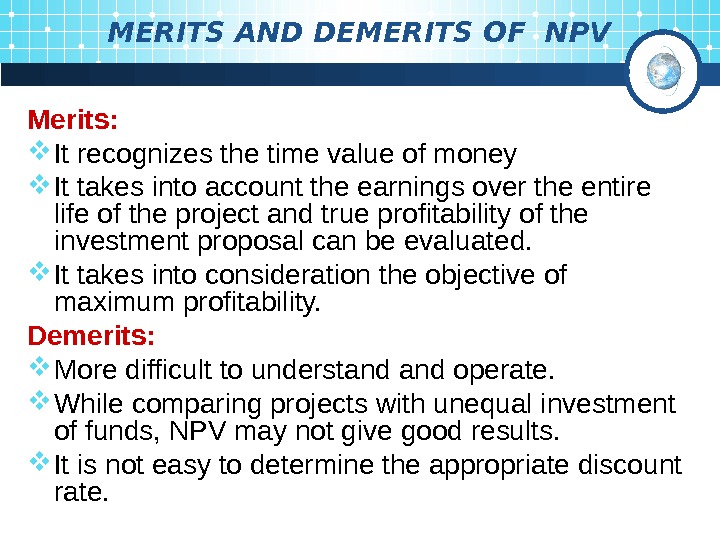
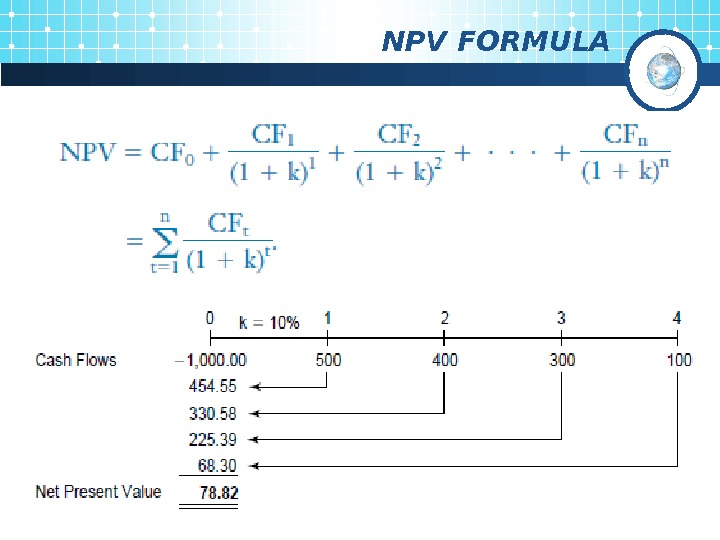
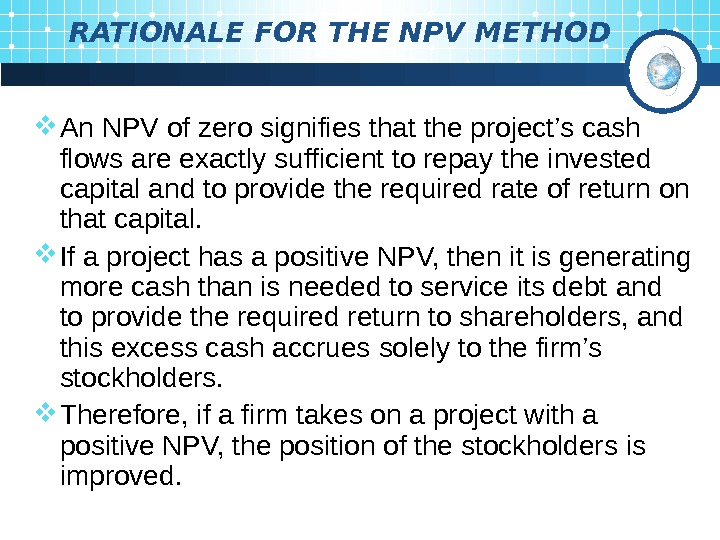
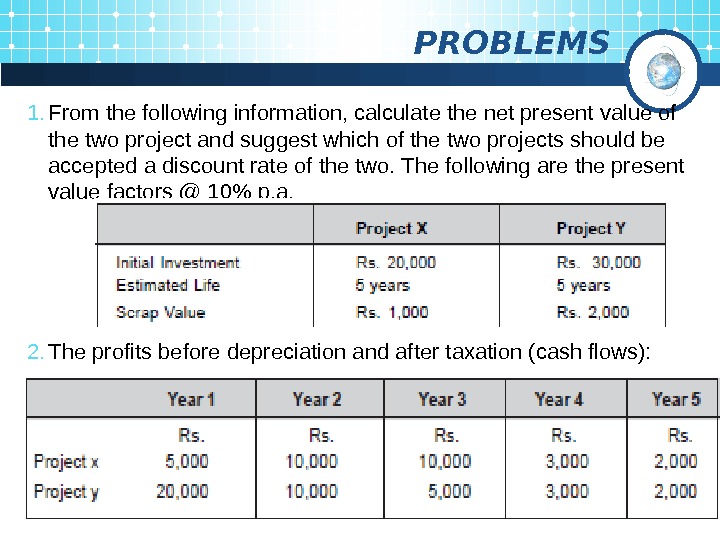
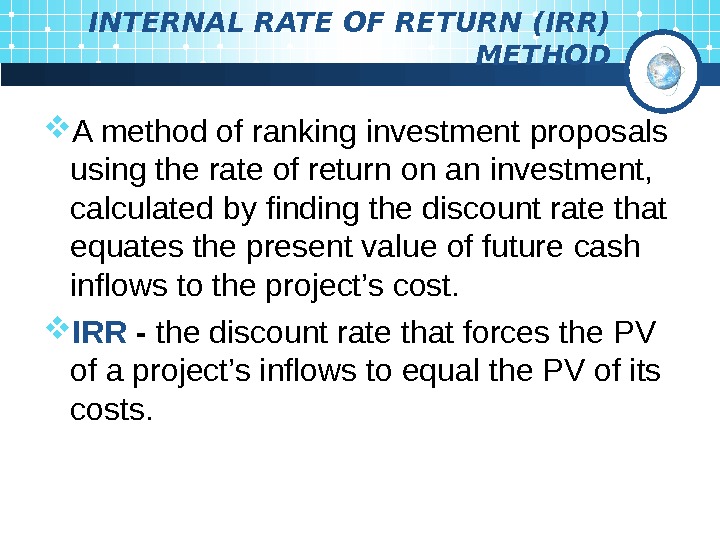
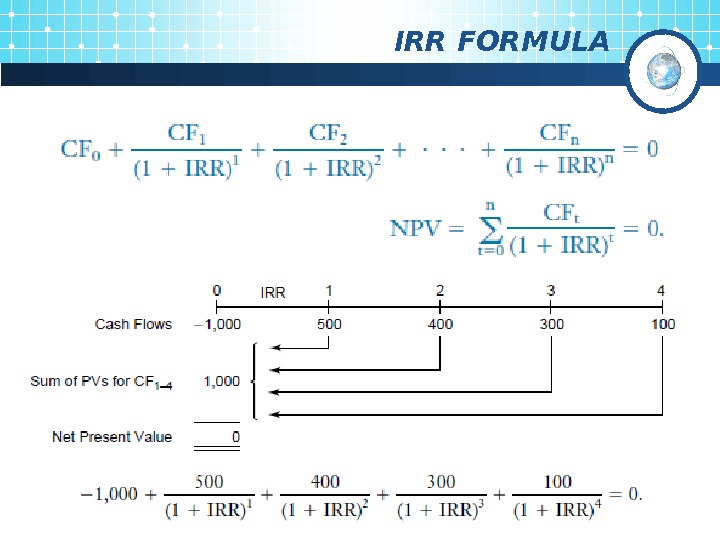
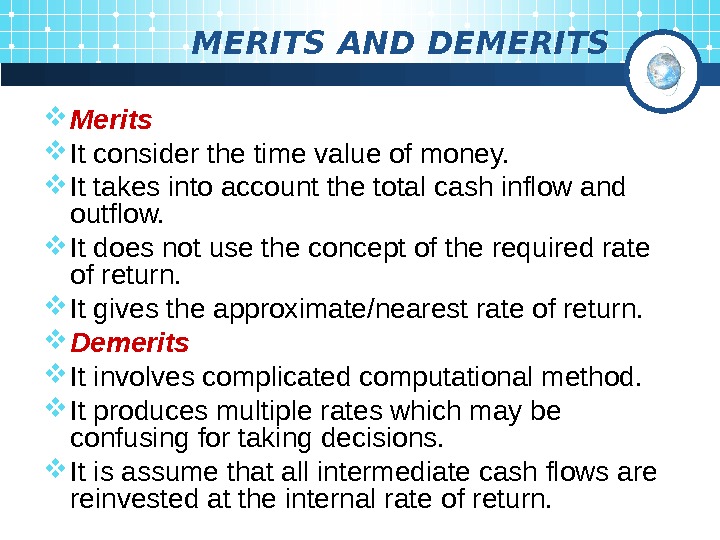
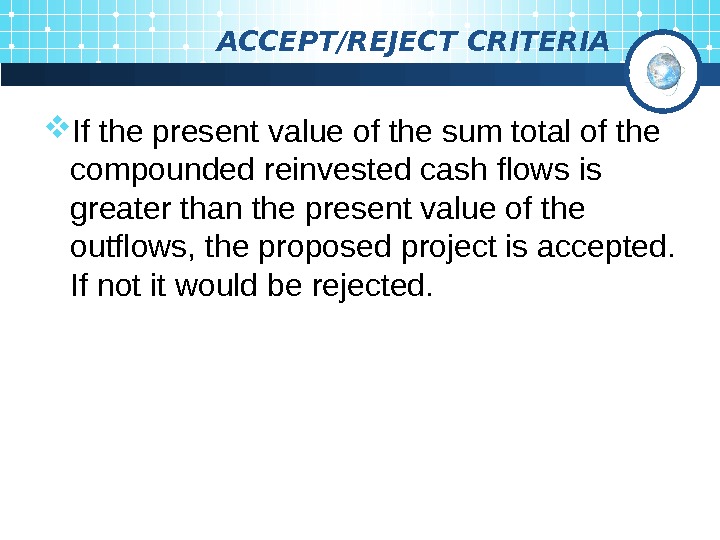
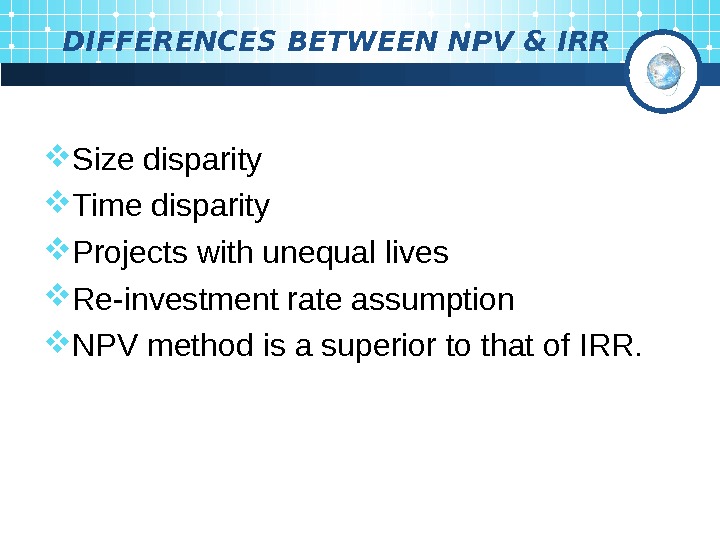
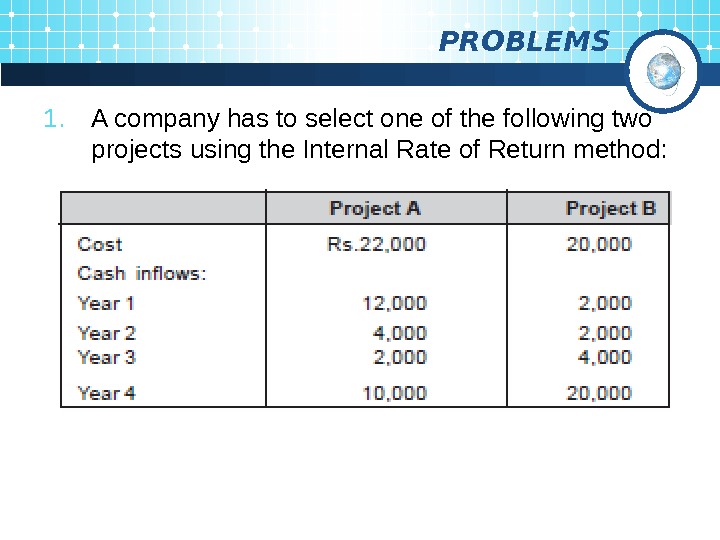
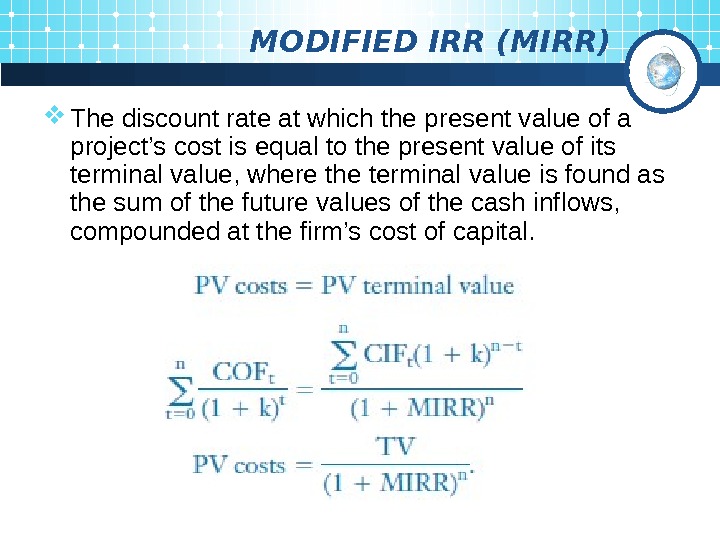
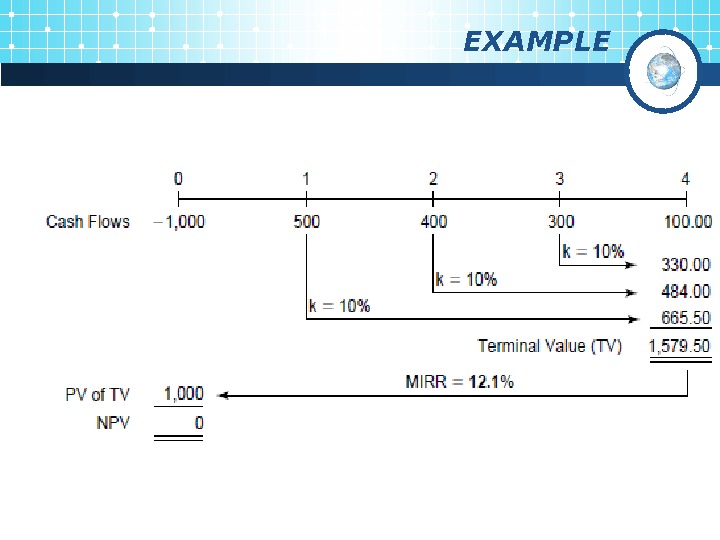
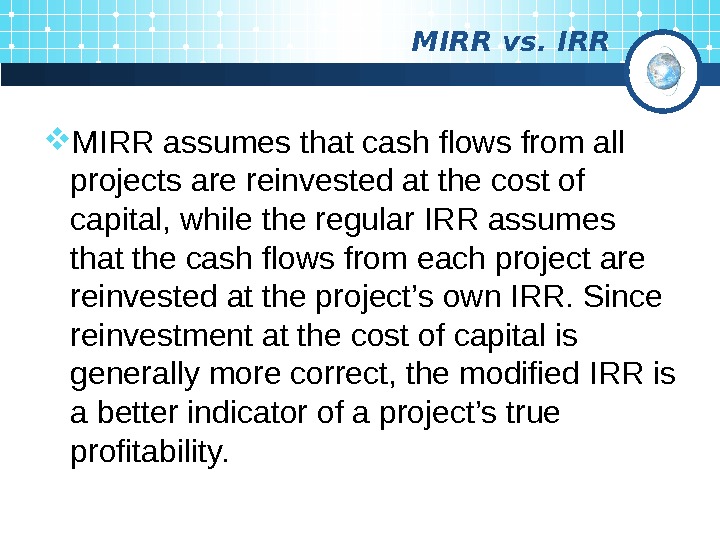
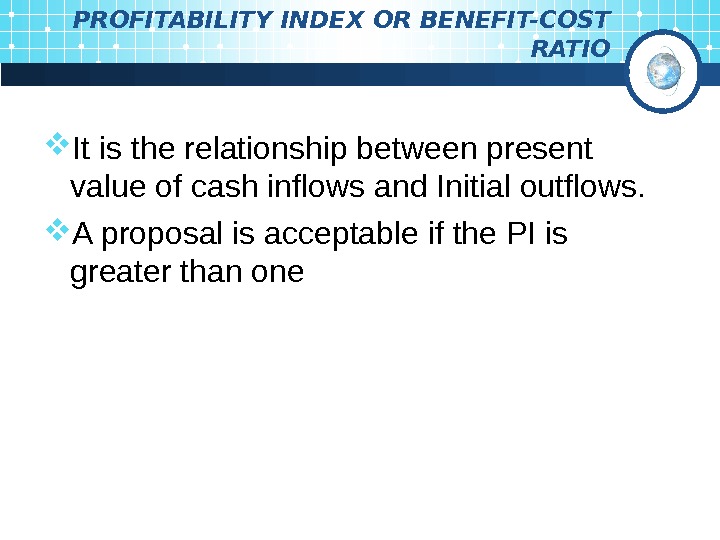

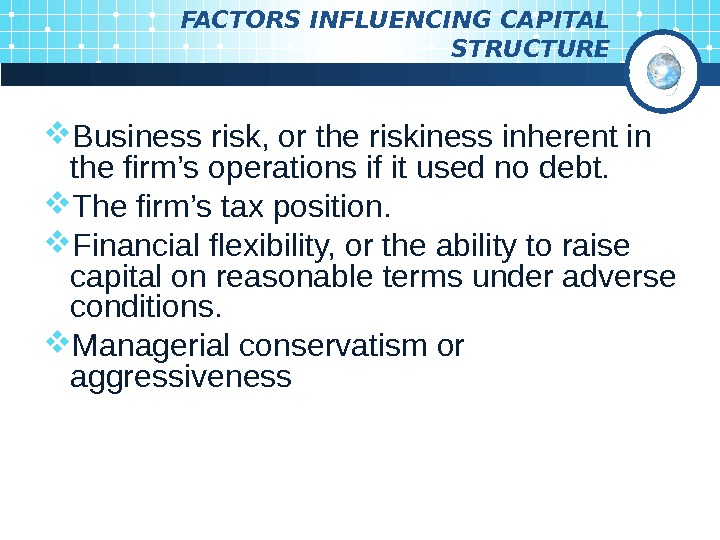
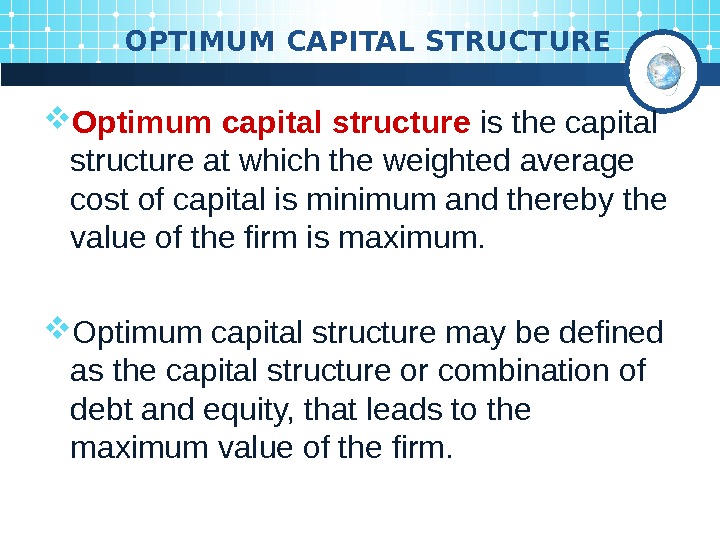
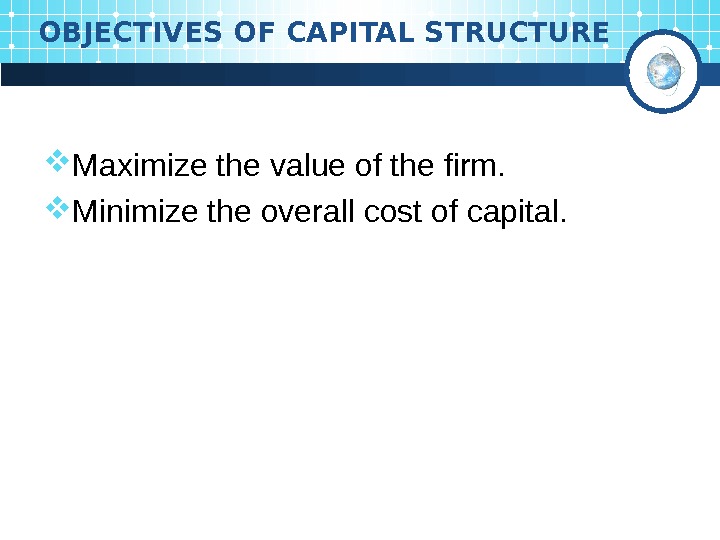
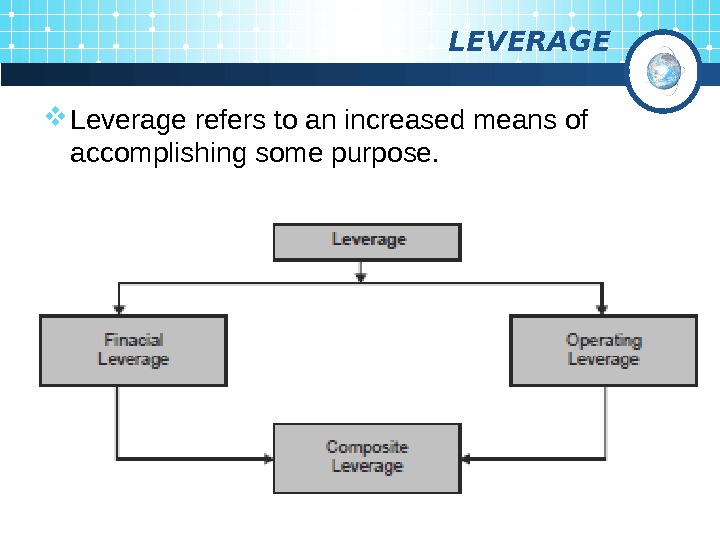
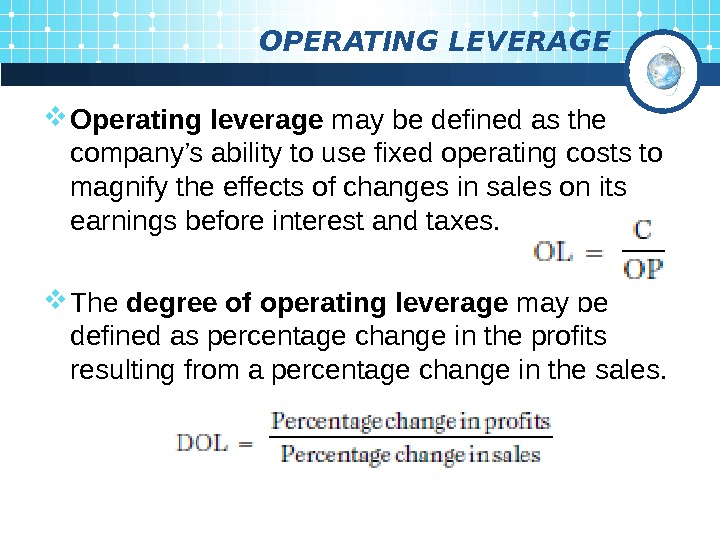
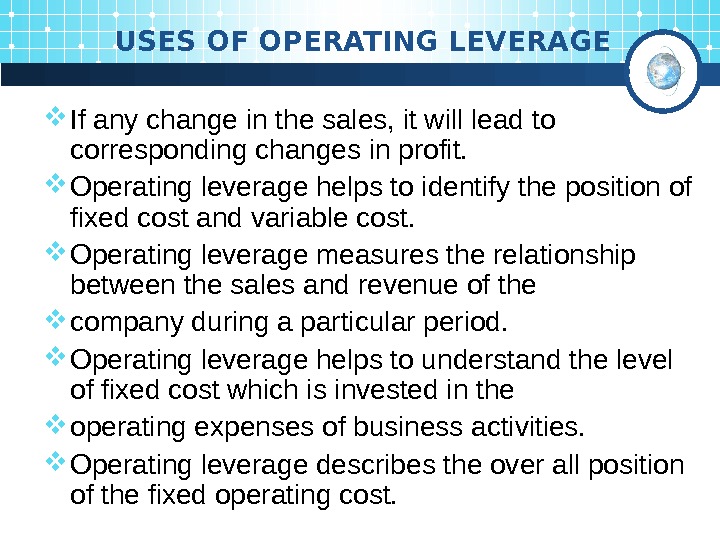
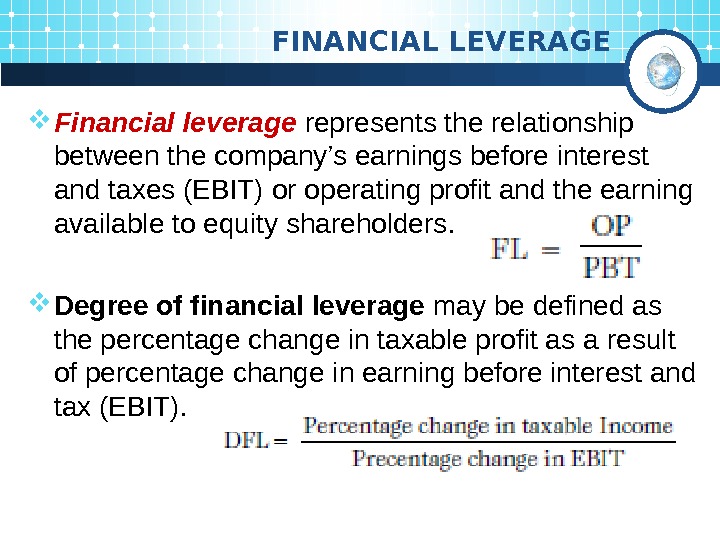
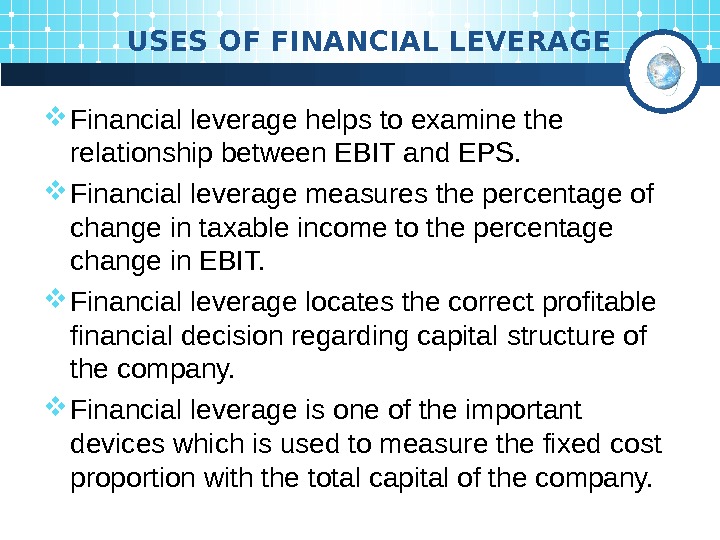
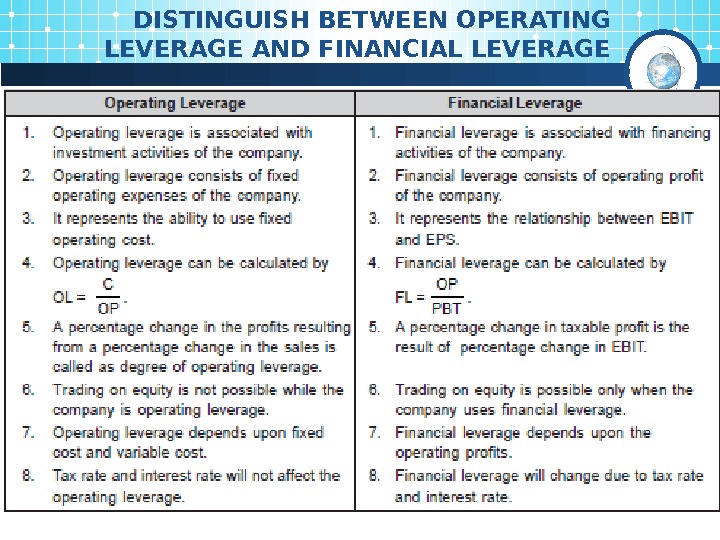
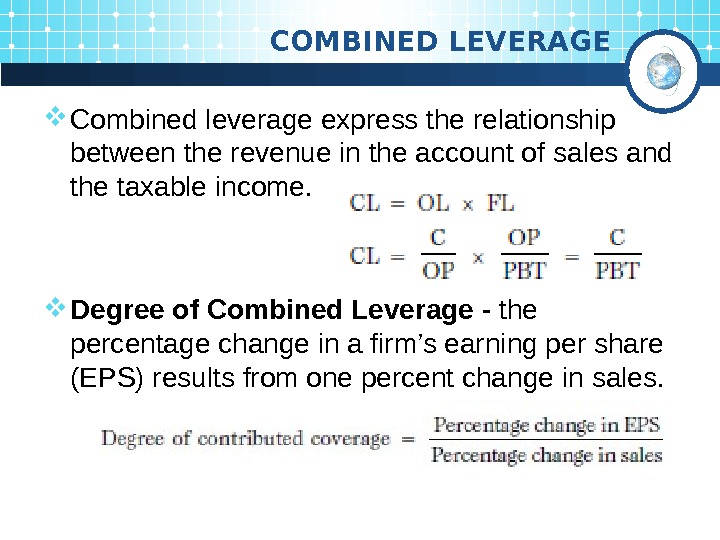
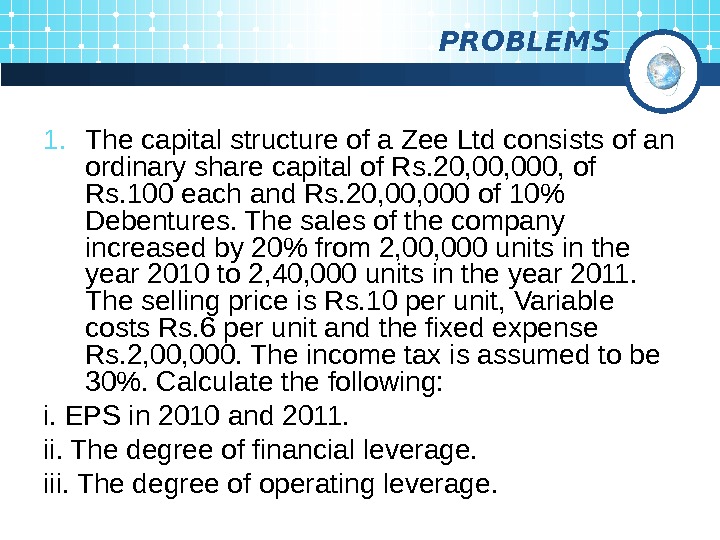
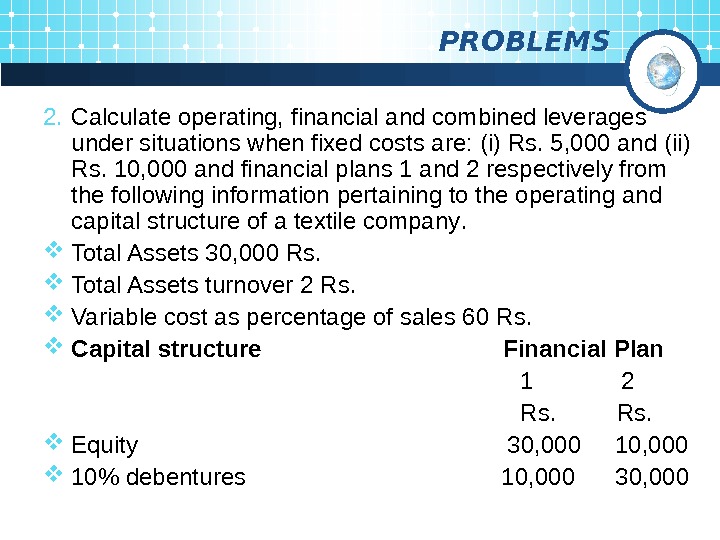

financial_management.ppt
- Размер: 2.1 Mегабайта
- Количество слайдов: 84
Описание презентации Managemen t and business department Financial Management Oksana по слайдам
 Managemen t and business department Financial Management Oksana Vladimirovna Mazorenko
Managemen t and business department Financial Management Oksana Vladimirovna Mazorenko
 INTRODUCTION TO FINANCIAL MANAGEMENT Nature of Financial Management 1 Objectives of Financial Management 2 Functions of Finance Manager 3 Financial Management Process
INTRODUCTION TO FINANCIAL MANAGEMENT Nature of Financial Management 1 Objectives of Financial Management 2 Functions of Finance Manager 3 Financial Management Process
 DEFINITION OF FINANCIAL MANAGEMENT The ways and means of managing money. Planning, acquisition, allocation, and utilization of financial resources with the aim to achieve objectives of the firm. Is the application of planning and controlling functions to the finance function.
DEFINITION OF FINANCIAL MANAGEMENT The ways and means of managing money. Planning, acquisition, allocation, and utilization of financial resources with the aim to achieve objectives of the firm. Is the application of planning and controlling functions to the finance function.
 NATURE OF FINANCIAL MANAGEMENT Financial Management is mainly concerned with the proper management of funds. The financial manager must see that the funds are procured in a manner that there is risk, cost and control considerations are properly balanced in a given situation and there is optimum utilization of funds.
NATURE OF FINANCIAL MANAGEMENT Financial Management is mainly concerned with the proper management of funds. The financial manager must see that the funds are procured in a manner that there is risk, cost and control considerations are properly balanced in a given situation and there is optimum utilization of funds.
 SCOPE OF FINANCIAL MANAGEMENT Traditional approach 1. It is concerned with raising of funds and administration of funds 2. Issuing securities and raise funds 3. Raising funds from financial institutions 4. Maintaining proper records and legal activities.
SCOPE OF FINANCIAL MANAGEMENT Traditional approach 1. It is concerned with raising of funds and administration of funds 2. Issuing securities and raise funds 3. Raising funds from financial institutions 4. Maintaining proper records and legal activities.
 SCOPE OF FINANCIAL MANAGEMENT Modern approach 1. To decide how much amount is required from where and maintain records 2. What type of assets are required 3. In what way the funds utilized i. e. optimum utilization 4. Taking dividend decision
SCOPE OF FINANCIAL MANAGEMENT Modern approach 1. To decide how much amount is required from where and maintain records 2. What type of assets are required 3. In what way the funds utilized i. e. optimum utilization 4. Taking dividend decision
 OBJECTIVES OF FINANCIAL MANAGEMENT Financial objectives Non-financial objectives
OBJECTIVES OF FINANCIAL MANAGEMENT Financial objectives Non-financial objectives
 FINANCIAL OBJECTIVES Profit maximization Wealth maximization
FINANCIAL OBJECTIVES Profit maximization Wealth maximization
 FINANCIAL OBJECTIVES Profit: • Profit earning. • Profitability is a barometer for measuring efficiency and economic prosperity of a business. • Economic and business conditions do not remain the same all the time. • Profits are the main sources of finance for the growth of the business. • Profitability is essential for fulfilling social goals. Wealth : • Maximizes implies the market value of its shares.
FINANCIAL OBJECTIVES Profit: • Profit earning. • Profitability is a barometer for measuring efficiency and economic prosperity of a business. • Economic and business conditions do not remain the same all the time. • Profits are the main sources of finance for the growth of the business. • Profitability is essential for fulfilling social goals. Wealth : • Maximizes implies the market value of its shares.
 PROFIT vs WEALTH The term profit is vague. Ignores the time value of money. Ignores Risk factor. Dividend policy. Profit Vs Wealth Its an prescriptive idea. Not necessarily socially desirable. Controversy objectives. Maximize stockholders wealth or wealth of firm. (Agency problems) Ownership and management are separated
PROFIT vs WEALTH The term profit is vague. Ignores the time value of money. Ignores Risk factor. Dividend policy. Profit Vs Wealth Its an prescriptive idea. Not necessarily socially desirable. Controversy objectives. Maximize stockholders wealth or wealth of firm. (Agency problems) Ownership and management are separated
 NON-FINANCIAL OBJECTIVES General welfare of employees General welfare of society Fulfillment of responsibilities toward customers, suppliers etc. Effective utilization of funds
NON-FINANCIAL OBJECTIVES General welfare of employees General welfare of society Fulfillment of responsibilities toward customers, suppliers etc. Effective utilization of funds
 FUNCTIONS Of A FINANCE MANAGER Forecasting Financial Requirements Acquiring Necessary Capital Investment Decision Cash Management Interrelation with Other Departments
FUNCTIONS Of A FINANCE MANAGER Forecasting Financial Requirements Acquiring Necessary Capital Investment Decision Cash Management Interrelation with Other Departments
 RESPONSIBILITIES OF FINANCE MANAGER The basic responsibility of the treasurer is to provide, manage and protect the firm’s capital. The basic responsibility of the controller is to check that the funds are used efficiently.
RESPONSIBILITIES OF FINANCE MANAGER The basic responsibility of the treasurer is to provide, manage and protect the firm’s capital. The basic responsibility of the controller is to check that the funds are used efficiently.
 FUNCTIONS OF FM Treasurer 1. Obtaining finance 2. Banking relationship 3. Investor relationship 4. Short- term financing 5. Cash management 6. Credit administration 7. Investments 8. Insurance Controller 1. Financial Accounting 2. Internal audit 3. Taxation 4. Management accounting and 5. control 6. Budgeting, planning and 7. control 8. Economic appraisal 9. Reporting to Government
FUNCTIONS OF FM Treasurer 1. Obtaining finance 2. Banking relationship 3. Investor relationship 4. Short- term financing 5. Cash management 6. Credit administration 7. Investments 8. Insurance Controller 1. Financial Accounting 2. Internal audit 3. Taxation 4. Management accounting and 5. control 6. Budgeting, planning and 7. control 8. Economic appraisal 9. Reporting to Government
 F INANCIAL M ANAGEMENT PROCESS FM is a dynamic decision-making process include a series of interrelated activities involving: Financial planning Financial decision-making • Investment decision • Financing decision • Work capital decision • Dividend decision Financial analysis Financial control
F INANCIAL M ANAGEMENT PROCESS FM is a dynamic decision-making process include a series of interrelated activities involving: Financial planning Financial decision-making • Investment decision • Financing decision • Work capital decision • Dividend decision Financial analysis Financial control
 FINANCIAL MANAGEMENT INSTRUMENTS Time value analysis 1 Cost of Capital 2 Investment Decisions
FINANCIAL MANAGEMENT INSTRUMENTS Time value analysis 1 Cost of Capital 2 Investment Decisions
 CONCEPT OF TIME VALUE OF MONEY Value of the money received today is more than the value of the same amount of money received after a certain period. Reasons for Time value Higher preference for present consumption Purchasing power of the currency declines with time. Money received today can be invested to earn suitable returns.
CONCEPT OF TIME VALUE OF MONEY Value of the money received today is more than the value of the same amount of money received after a certain period. Reasons for Time value Higher preference for present consumption Purchasing power of the currency declines with time. Money received today can be invested to earn suitable returns.
 REASONS FOR TIME PREFERENCE OF MONEY The future is always uncertain and involves risk. People generally prefer spending than deferring for future. Money has time value because of opportunities available to invest.
REASONS FOR TIME PREFERENCE OF MONEY The future is always uncertain and involves risk. People generally prefer spending than deferring for future. Money has time value because of opportunities available to invest.
 TIMELINE AND TIME TRAVEL An important tool used in time value of money analysis; it is a graphical representation used to show the timing of cash flows. Rules of Time travel Only cash flows in the same units can be compared or combined at the same point in time. To move a cash flow forward in time, must compound it. To move a cash flow backward in time, must use discounting.
TIMELINE AND TIME TRAVEL An important tool used in time value of money analysis; it is a graphical representation used to show the timing of cash flows. Rules of Time travel Only cash flows in the same units can be compared or combined at the same point in time. To move a cash flow forward in time, must compound it. To move a cash flow backward in time, must use discounting.
 TECHNIQUES OF TIME VALUE OF MONEY Compounding Technique The process of going from today’s values, or present values (PVs), to future values (FVs) is called compounding. Example You deposit $100 in a bank that pays 5 percent interest each year. How much would you have at the end of one year?
TECHNIQUES OF TIME VALUE OF MONEY Compounding Technique The process of going from today’s values, or present values (PVs), to future values (FVs) is called compounding. Example You deposit $100 in a bank that pays 5 percent interest each year. How much would you have at the end of one year?
 COMPOUNDING TECHNIQUE PV — present value, or beginning amount. ( Here PV = $100 ). i — interest rate the bank pays on the account per year. The interest earned is based on the balance at the beginning of each year, and we assume that it is paid at the end of the year. ( Here i = 5%, or, expressed as a decimal, i = 0. 05 ). INT — dollars of interest you earn during the year / ( Here INT = $100(0. 05) = $5. FVn — future value, or ending amount, at the end of n years. n — number of periods involved in the analysis. ( Here n = 1 ). FVn = FV 1 = PV + INT = PV + PV(i) = PV(1 + i) FVn= $100 * (1 + 0. 05) = $105.
COMPOUNDING TECHNIQUE PV — present value, or beginning amount. ( Here PV = $100 ). i — interest rate the bank pays on the account per year. The interest earned is based on the balance at the beginning of each year, and we assume that it is paid at the end of the year. ( Here i = 5%, or, expressed as a decimal, i = 0. 05 ). INT — dollars of interest you earn during the year / ( Here INT = $100(0. 05) = $5. FVn — future value, or ending amount, at the end of n years. n — number of periods involved in the analysis. ( Here n = 1 ). FVn = FV 1 = PV + INT = PV + PV(i) = PV(1 + i) FVn= $100 * (1 + 0. 05) = $105.
 FUTURE VALUE Future Value (FV) — The amount to which a cash flow or series of cash flows will grow over a given period of time when compounded at a given interest rate.
FUTURE VALUE Future Value (FV) — The amount to which a cash flow or series of cash flows will grow over a given period of time when compounded at a given interest rate.
 FUTURE VALUE FORMULA Methods of calculating Numerical Solution Interest Tables (Tabular Solution) Financial Calculator Solution Spreadsheet Solution
FUTURE VALUE FORMULA Methods of calculating Numerical Solution Interest Tables (Tabular Solution) Financial Calculator Solution Spreadsheet Solution
 SOLVING METHODS OF TIME VALUE PROBLEM 1. First, we state the problem in words. 2. Next, we diagram the problem on a time line. 3. We show the equation that must be solved. 4. We present four alternative procedures for solving the equation
SOLVING METHODS OF TIME VALUE PROBLEM 1. First, we state the problem in words. 2. Next, we diagram the problem on a time line. 3. We show the equation that must be solved. 4. We present four alternative procedures for solving the equation
 SOLVING METHODS OF TIME VALUE PROBLEM Numerical Solution : One can use a regular calculator and either multiply (1 + i) by itself n — 1 times or else use the exponential function to raise (1 + i) to the n th power.
SOLVING METHODS OF TIME VALUE PROBLEM Numerical Solution : One can use a regular calculator and either multiply (1 + i) by itself n — 1 times or else use the exponential function to raise (1 + i) to the n th power.
 SOLVING METHODS OF TIME VALUE PROBLEM Interest Tables (Tabular Solution) The Future Value Interest Factor for i and n (FVIFi, n ) is defined as (1 + i)n, and these factors can be found by using a regular calculator as discussed above and then put into tables.
SOLVING METHODS OF TIME VALUE PROBLEM Interest Tables (Tabular Solution) The Future Value Interest Factor for i and n (FVIFi, n ) is defined as (1 + i)n, and these factors can be found by using a regular calculator as discussed above and then put into tables.
 SOLVING METHODS OF TIME VALUE PROBLEM Financial Calculator Solution : Equation and a number of other equations have been programmed directly into financial calculators, and these calculators can be used to find future values.
SOLVING METHODS OF TIME VALUE PROBLEM Financial Calculator Solution : Equation and a number of other equations have been programmed directly into financial calculators, and these calculators can be used to find future values.
 SOLVING METHODS OF TIME VALUE PROBLEM Spreadsheet Solution
SOLVING METHODS OF TIME VALUE PROBLEM Spreadsheet Solution
 MULTI PERIOD COMPOUNDING The actual rate of interest realized called effective rate in case of multi period compounding is more than the apparent annual rate of interest called nominal rate. Effective rate of interest is calculated with the following formula: m ( 1 +i /m) – 1 Where, i — refers to nominal rate of interest m — refers to frequency of compounding per year
MULTI PERIOD COMPOUNDING The actual rate of interest realized called effective rate in case of multi period compounding is more than the apparent annual rate of interest called nominal rate. Effective rate of interest is calculated with the following formula: m ( 1 +i /m) – 1 Where, i — refers to nominal rate of interest m — refers to frequency of compounding per year
 COMPOUNDED (FUTURE) VALUE OF ANNUITY Annuity — a series of payments of an equal amount at fixed intervals for a specified number of periods. Ordinary (Deferred) Annuity — an annuity whose payments occur at the end of each period. n t tn ni. PMTFV
COMPOUNDED (FUTURE) VALUE OF ANNUITY Annuity — a series of payments of an equal amount at fixed intervals for a specified number of periods. Ordinary (Deferred) Annuity — an annuity whose payments occur at the end of each period. n t tn ni. PMTFV
 COMPOUNDED (FUTURE) VALUE OF ANNUITY Annuity Due — an annuity whose payments occur at the beginning of each period. )1(*)_()_(iannuity. Ordinary. FVAdue. Annuity. FVAn
COMPOUNDED (FUTURE) VALUE OF ANNUITY Annuity Due — an annuity whose payments occur at the beginning of each period. )1(*)_()_(iannuity. Ordinary. FVAdue. Annuity. FVAn
 PROBLEMS 1. What will be the value of Rs. 100 after two years at 10% p. a. Rate of interest if neither the principal sum of Rs. 100 nor interest is withdrawn at the end of one year. 2. From the above calculate the value of Rs. 100 @ 10% after five years. 3. If you deposit Rs. 1000 in an account earning 7% simple interest for two years. What is the accumulated interest at the end of the second year? 4. Calculate the compound value of Rs. 10, 000 at the end of third year @ 12% rate of interest when interest is calculated on yearly and quarterly basis.
PROBLEMS 1. What will be the value of Rs. 100 after two years at 10% p. a. Rate of interest if neither the principal sum of Rs. 100 nor interest is withdrawn at the end of one year. 2. From the above calculate the value of Rs. 100 @ 10% after five years. 3. If you deposit Rs. 1000 in an account earning 7% simple interest for two years. What is the accumulated interest at the end of the second year? 4. Calculate the compound value of Rs. 10, 000 at the end of third year @ 12% rate of interest when interest is calculated on yearly and quarterly basis.
 PROBLEMS 5. Mr. Adams deposits Rs. 1000 at the end of every year four years and the deposit earns a compound interest @ 10% p. a. Determine how much money he will have at the end of four years. 6. Mr. Bradly deposits Rs. 5000 at the beginning of each year for five years in a bank and the deposit earns a compound interest @ 8% p. a. Determine how much money he will have at the end of five years? 7. Your parents are planning to retire in 18 years. They currently have $250, 000, and they would like to have $1, 000 when they retire. What annual rate of interest would they have to earn on their $250, 000 in order to reach their goal, assuming they save no more money?
PROBLEMS 5. Mr. Adams deposits Rs. 1000 at the end of every year four years and the deposit earns a compound interest @ 10% p. a. Determine how much money he will have at the end of four years. 6. Mr. Bradly deposits Rs. 5000 at the beginning of each year for five years in a bank and the deposit earns a compound interest @ 8% p. a. Determine how much money he will have at the end of five years? 7. Your parents are planning to retire in 18 years. They currently have $250, 000, and they would like to have $1, 000 when they retire. What annual rate of interest would they have to earn on their $250, 000 in order to reach their goal, assuming they save no more money?
 TECHNIQUES OF TIME VALUE OF MONEY (cont) Discounting or Present Value Technique Present value shows what the value is today of some future sum of money. Discounting — the process of finding the present value of a cash flow or a series of cash flows; discounting is the reverse of compounding.
TECHNIQUES OF TIME VALUE OF MONEY (cont) Discounting or Present Value Technique Present value shows what the value is today of some future sum of money. Discounting — the process of finding the present value of a cash flow or a series of cash flows; discounting is the reverse of compounding.
 PRESENT VALUE OF AN ANNUITY Ordinary annuities — If the payments come at the end of each year, then the annuity is an ordinary annuity n t t n i PMTPV
PRESENT VALUE OF AN ANNUITY Ordinary annuities — If the payments come at the end of each year, then the annuity is an ordinary annuity n t t n i PMTPV
 PRESENT VALUE OF AN ANNUITY Annuities due — payments been made at the beginning of each year. )1(*)_()_(iannuity. Ordinary. PVAdue. Annuity. PVAn
PRESENT VALUE OF AN ANNUITY Annuities due — payments been made at the beginning of each year. )1(*)_()_(iannuity. Ordinary. PVAdue. Annuity. PVAn
 PRESENT VALUE OF AN ANNUITY Perpetuity — a stream of equal payments expected to continue forever.
PRESENT VALUE OF AN ANNUITY Perpetuity — a stream of equal payments expected to continue forever.
 PROBLEMS 1. Calculate the present value of Rs. 1000 to be received after one year @ 10% time preference rate. 2. Mr. X is to receive Rs. 5000 after five years @ 10% p. a. Calculate its present value.
PROBLEMS 1. Calculate the present value of Rs. 1000 to be received after one year @ 10% time preference rate. 2. Mr. X is to receive Rs. 5000 after five years @ 10% p. a. Calculate its present value.
 PROBLEMS 4. Mr. X has to receive Rs. 2000 per year for five years. Calculate the present value of annuity assuming that he can earn interest on his investment @ 10% p. a. 5. Mr. A has to receive Rs. 10, 000 at the beginning of each year for five years. Calculate the present value of annuity due assuming 10% rate of interest. 6. Calculate the present value of Rs. 1000 received in perpetuity for an infinite period taking discount rate of 10%.
PROBLEMS 4. Mr. X has to receive Rs. 2000 per year for five years. Calculate the present value of annuity assuming that he can earn interest on his investment @ 10% p. a. 5. Mr. A has to receive Rs. 10, 000 at the beginning of each year for five years. Calculate the present value of annuity due assuming 10% rate of interest. 6. Calculate the present value of Rs. 1000 received in perpetuity for an infinite period taking discount rate of 10%.
 UNEVEN CASH FLOW STREAMS Uneven Cash Flow Stream — a series of cash flows in which the amount varies from one period to the next. Cash Flow (CF) — this term designates uneven cash flows. The PV of an uneven cash flow stream is found as the sum of the PVs of the individual cash flows of the stream.
UNEVEN CASH FLOW STREAMS Uneven Cash Flow Stream — a series of cash flows in which the amount varies from one period to the next. Cash Flow (CF) — this term designates uneven cash flows. The PV of an uneven cash flow stream is found as the sum of the PVs of the individual cash flows of the stream.
 PRESENT VALUE OF AN UNEVEN CASH FLOW STREAM
PRESENT VALUE OF AN UNEVEN CASH FLOW STREAM
 FUTURE VALUE OF AN UNEVEN CASH FLOW STREAM The future value of an uneven cash flow stream (sometimes called the terminal value ) is found by compounding each payment to the end of the stream and then summing the future values
FUTURE VALUE OF AN UNEVEN CASH FLOW STREAM The future value of an uneven cash flow stream (sometimes called the terminal value ) is found by compounding each payment to the end of the stream and then summing the future values
 FUTURE VALUE OF AN UNEVEN CASH FLOW STREAM
FUTURE VALUE OF AN UNEVEN CASH FLOW STREAM
 PROBLEMS 1. Calculate present value of the following five years cash flows assuming a discount rate of 10%. The cash flows for each respective year are Rs. 5000, Rs. 10, 000, Rs. 3000 and Rs. 2000. 2. An investment pays you $100 at the end of each of the next 3 years. The investment will then pay you $200 at the end of Year 4, $300 at the end of Year 5, and $500 at the end of Year 6. If the interest rate earned on the investment is 8 percent, what is its present value? What is its future value?
PROBLEMS 1. Calculate present value of the following five years cash flows assuming a discount rate of 10%. The cash flows for each respective year are Rs. 5000, Rs. 10, 000, Rs. 3000 and Rs. 2000. 2. An investment pays you $100 at the end of each of the next 3 years. The investment will then pay you $200 at the end of Year 4, $300 at the end of Year 5, and $500 at the end of Year 6. If the interest rate earned on the investment is 8 percent, what is its present value? What is its future value?
 INVESTMENT DECISIONS Capital Budgeting — the process of planning expenditures on assets whose cash flows are expected to extend beyond one year. It is that expenditure incurred at one point of time whereas benefits of expenditure are realised at different points of time in future. It is concerned with the allocation of the firm’s scarce financial resources among the available market opportunities.
INVESTMENT DECISIONS Capital Budgeting — the process of planning expenditures on assets whose cash flows are expected to extend beyond one year. It is that expenditure incurred at one point of time whereas benefits of expenditure are realised at different points of time in future. It is concerned with the allocation of the firm’s scarce financial resources among the available market opportunities.
 DISTINCTION OF CAPITAL BUDGETING DECISIONS Involves the exchange of current funds for the benefits to be achieved in future. Future benefits are expected to be realised over a series of years. Funds invested are in non-flexible and long term activities. Involve huge funds and are irreversible decisions. Are strategic investment decisions.
DISTINCTION OF CAPITAL BUDGETING DECISIONS Involves the exchange of current funds for the benefits to be achieved in future. Future benefits are expected to be realised over a series of years. Funds invested are in non-flexible and long term activities. Involve huge funds and are irreversible decisions. Are strategic investment decisions.
 NATURE OF INVESTMENT DECISIONS Large investments. Long-term commitment of funds. Irreversible in nature. Long-term effect on profitability. Difficulties of Investment decisions. National importance.
NATURE OF INVESTMENT DECISIONS Large investments. Long-term commitment of funds. Irreversible in nature. Long-term effect on profitability. Difficulties of Investment decisions. National importance.
 CAPITAL BUDGETING PROCESS 1. Identification on Investment proposals. 2. Screening the proposals. 3. Evaluation of various proposals. 4. Fixing priorities. 5. Final approval and preparation of capital 6. expenditure budget. 7. Implementing proposal. 8. Performance review.
CAPITAL BUDGETING PROCESS 1. Identification on Investment proposals. 2. Screening the proposals. 3. Evaluation of various proposals. 4. Fixing priorities. 5. Final approval and preparation of capital 6. expenditure budget. 7. Implementing proposal. 8. Performance review.
 CAPITAL BUDGETING DECISION RULES 1. payback, 2. discounted payback, 3. net present value (NPV), 4. internal rate of return (IRR), 5. modified internal rate of return (MIRR).
CAPITAL BUDGETING DECISION RULES 1. payback, 2. discounted payback, 3. net present value (NPV), 4. internal rate of return (IRR), 5. modified internal rate of return (MIRR).
 NET CASH FLOWS FOR PROJECTS S AND L
NET CASH FLOWS FOR PROJECTS S AND L
 PAYBACK PERIOD (PP) Payback Period — the length of time required for an investment’s net revenues to cover its cost. lowscash. Annual projecttheofoutlay. Cash PP inf__ ____
PAYBACK PERIOD (PP) Payback Period — the length of time required for an investment’s net revenues to cover its cost. lowscash. Annual projecttheofoutlay. Cash PP inf__ ____
 ADVANTAGES OF PP Simple to understand easy to calculate. A project with a shorter pay-back period is preferred to the one having a longer pay-back period. This method is suited to a firm which has shortage of cash.
ADVANTAGES OF PP Simple to understand easy to calculate. A project with a shorter pay-back period is preferred to the one having a longer pay-back period. This method is suited to a firm which has shortage of cash.
 DISADVANTAGES OF PP It does not take into account the cash inflows earned after the pay-back period and hence true profitability of the projects cannot be correctly assessed. Ignores the time value of money. It does not take into consideration the cost of capital. It treats each asset individually in isolation with other assets.
DISADVANTAGES OF PP It does not take into account the cash inflows earned after the pay-back period and hence true profitability of the projects cannot be correctly assessed. Ignores the time value of money. It does not take into consideration the cost of capital. It treats each asset individually in isolation with other assets.
 DISCOUNTED PAYBACK PERIOD The length of time required for an investment’s cash flows, discounted at the investment’s cost of capital, to cover its cost.
DISCOUNTED PAYBACK PERIOD The length of time required for an investment’s cash flows, discounted at the investment’s cost of capital, to cover its cost.
 PROBLEMS 1. There are two projects X and Y. Each project requires an investment of Rs. 20, 000. You are required rank these projects according to PB method. The following are the net profit before depreciation and after tax of the two projects for their respective years. Project X Rs. 1000, Rs. 2000, Rs. 4000, Rs. 5000 and Rs. 8000. Project Y, Rs. 2000, Rs. 4000, Rs. 6000, Rs. 8000. 2. Calculate discounted pay-back period from the following information: Cost of project Rs. 6 Lacs, Life of project 5 years. Annual Cash inflow Rs. 2 Lacs, Cut off rate 10%.
PROBLEMS 1. There are two projects X and Y. Each project requires an investment of Rs. 20, 000. You are required rank these projects according to PB method. The following are the net profit before depreciation and after tax of the two projects for their respective years. Project X Rs. 1000, Rs. 2000, Rs. 4000, Rs. 5000 and Rs. 8000. Project Y, Rs. 2000, Rs. 4000, Rs. 6000, Rs. 8000. 2. Calculate discounted pay-back period from the following information: Cost of project Rs. 6 Lacs, Life of project 5 years. Annual Cash inflow Rs. 2 Lacs, Cut off rate 10%.
 NET PRESENT VALUE (NPV) METHOD A method of ranking investment proposals using the NPV, which is equal to the present value of future net cash flows, discounted at the marginal cost of capital. Discounted Cash Flow (DCF) Techniques — methods for ranking investment proposals that employ time value of money concepts.
NET PRESENT VALUE (NPV) METHOD A method of ranking investment proposals using the NPV, which is equal to the present value of future net cash flows, discounted at the marginal cost of capital. Discounted Cash Flow (DCF) Techniques — methods for ranking investment proposals that employ time value of money concepts.
 MERITS AND DEMERITS OF NPV Merits: It recognizes the time value of money It takes into account the earnings over the entire life of the project and true profitability of the investment proposal can be evaluated. It takes into consideration the objective of maximum profitability. Demerits: More difficult to understand operate. While comparing projects with unequal investment of funds, NPV may not give good results. It is not easy to determine the appropriate discount rate.
MERITS AND DEMERITS OF NPV Merits: It recognizes the time value of money It takes into account the earnings over the entire life of the project and true profitability of the investment proposal can be evaluated. It takes into consideration the objective of maximum profitability. Demerits: More difficult to understand operate. While comparing projects with unequal investment of funds, NPV may not give good results. It is not easy to determine the appropriate discount rate.
 NPV FORMUL
NPV FORMUL
 RATIONALE FOR THE NPV METHOD An NPV of zero signifies that the project’s cash flows are exactly sufficient to repay the invested capital and to provide the required rate of return on that capital. If a project has a positive NPV, then it is generating more cash than is needed to service its debt and to provide the required return to shareholders, and this excess cash accrues solely to the firm’s stockholders. Therefore, if a firm takes on a project with a positive NPV, the position of the stockholders is improved.
RATIONALE FOR THE NPV METHOD An NPV of zero signifies that the project’s cash flows are exactly sufficient to repay the invested capital and to provide the required rate of return on that capital. If a project has a positive NPV, then it is generating more cash than is needed to service its debt and to provide the required return to shareholders, and this excess cash accrues solely to the firm’s stockholders. Therefore, if a firm takes on a project with a positive NPV, the position of the stockholders is improved.
 PROBLEMS 1. From the following information, calculate the net present value of the two project and suggest which of the two projects should be accepted a discount rate of the two. The following are the present value factors @ 10% p. a. 2. The profits before depreciation and after taxation (cash flows):
PROBLEMS 1. From the following information, calculate the net present value of the two project and suggest which of the two projects should be accepted a discount rate of the two. The following are the present value factors @ 10% p. a. 2. The profits before depreciation and after taxation (cash flows):
 INTERNAL RATE OF RETURN (IRR) METHOD A method of ranking investment proposals using the rate of return on an investment, calculated by finding the discount rate that equates the present value of future cash inflows to the project’s cost. IRR — the discount rate that forces the PV of a project’s inflows to equal the PV of its costs.
INTERNAL RATE OF RETURN (IRR) METHOD A method of ranking investment proposals using the rate of return on an investment, calculated by finding the discount rate that equates the present value of future cash inflows to the project’s cost. IRR — the discount rate that forces the PV of a project’s inflows to equal the PV of its costs.
 IRR FORMUL
IRR FORMUL
 MERITS AND DEMERITS Merits It consider the time value of money. It takes into account the total cash inflow and outflow. It does not use the concept of the required rate of return. It gives the approximate/nearest rate of return. Demerits It involves complicated computational method. It produces multiple rates which may be confusing for taking decisions. It is assume that all intermediate cash flows are reinvested at the internal rate of return.
MERITS AND DEMERITS Merits It consider the time value of money. It takes into account the total cash inflow and outflow. It does not use the concept of the required rate of return. It gives the approximate/nearest rate of return. Demerits It involves complicated computational method. It produces multiple rates which may be confusing for taking decisions. It is assume that all intermediate cash flows are reinvested at the internal rate of return.
 ACCEPT/REJECT CRITERIA If the present value of the sum total of the compounded reinvested cash flows is greater than the present value of the outflows, the proposed project is accepted. If not it would be rejected.
ACCEPT/REJECT CRITERIA If the present value of the sum total of the compounded reinvested cash flows is greater than the present value of the outflows, the proposed project is accepted. If not it would be rejected.
 DIFFERENCES BETWEEN NPV & IRR Size disparity Time disparity Projects with unequal lives Re-investment rate assumption NPV method is a superior to that of IRR.
DIFFERENCES BETWEEN NPV & IRR Size disparity Time disparity Projects with unequal lives Re-investment rate assumption NPV method is a superior to that of IRR.
 PROBLEMS 1. A company has to select one of the following two projects using the Internal Rate of Return metho d :
PROBLEMS 1. A company has to select one of the following two projects using the Internal Rate of Return metho d :
 MODIFIED IRR (MIRR) The discount rate at which the present value of a project’s cost is equal to the present value of its terminal value, where the terminal value is found as the sum of the future values of the cash inflows, compounded at the firm’s cost of capital.
MODIFIED IRR (MIRR) The discount rate at which the present value of a project’s cost is equal to the present value of its terminal value, where the terminal value is found as the sum of the future values of the cash inflows, compounded at the firm’s cost of capital.
 EXAMPL
EXAMPL
 MIRR vs. IRR MIRR assumes that cash flows from all projects are reinvested at the cost of capital, while the regular IRR assumes that the cash flows from each project are reinvested at the project’s own IRR. Since reinvestment at the cost of capital is generally more correct, the modified IRR is a better indicator of a project’s true profitability.
MIRR vs. IRR MIRR assumes that cash flows from all projects are reinvested at the cost of capital, while the regular IRR assumes that the cash flows from each project are reinvested at the project’s own IRR. Since reinvestment at the cost of capital is generally more correct, the modified IRR is a better indicator of a project’s true profitability.
 PROFITABILITY INDEX OR BENEFIT-COST RATIO It is the relationship between present value of cash inflows and Initial outflows. A proposal is acceptable if the PI is greater than one
PROFITABILITY INDEX OR BENEFIT-COST RATIO It is the relationship between present value of cash inflows and Initial outflows. A proposal is acceptable if the PI is greater than one
 FINANCING DECISIONS Capital structure refers to the relationship between the various long-term source financing such as equity capital, preference share capital and debt capital. Capitalisation refers to the total amount of securities issued by a company. It is a quantitative aspect of the financial planning.
FINANCING DECISIONS Capital structure refers to the relationship between the various long-term source financing such as equity capital, preference share capital and debt capital. Capitalisation refers to the total amount of securities issued by a company. It is a quantitative aspect of the financial planning.
 FACTORS INFLUENCING CAPITAL STRUCTURE Business risk, or the riskiness inherent in the firm’s operations if it used no debt. The firm’s tax position. Financial flexibility, or the ability to raise capital on reasonable terms under adverse conditions. Managerial conservatism or aggressiveness
FACTORS INFLUENCING CAPITAL STRUCTURE Business risk, or the riskiness inherent in the firm’s operations if it used no debt. The firm’s tax position. Financial flexibility, or the ability to raise capital on reasonable terms under adverse conditions. Managerial conservatism or aggressiveness
 OPTIMUM CAPITAL STRUCTURE Optimum capital structure is the capital structure at which the weighted average cost of capital is minimum and thereby the value of the firm is maximum. Optimum capital structure may be defined as the capital structure or combination of debt and equity, that leads to the maximum value of the firm.
OPTIMUM CAPITAL STRUCTURE Optimum capital structure is the capital structure at which the weighted average cost of capital is minimum and thereby the value of the firm is maximum. Optimum capital structure may be defined as the capital structure or combination of debt and equity, that leads to the maximum value of the firm.
 OBJECTIVES OF CAPITAL STRUCTURE Maximize the value of the firm. Minimize the overall cost of capital.
OBJECTIVES OF CAPITAL STRUCTURE Maximize the value of the firm. Minimize the overall cost of capital.
 LEVERAGE Leverage refers to an increased means of accomplishing some purpose.
LEVERAGE Leverage refers to an increased means of accomplishing some purpose.
 OPERATING LEVERAGE Operating leverage may be defined as the company’s ability to use fixed operating costs to magnify the effects of changes in sales on its earnings before interest and taxes. The degree of operating leverage may be defined as percentage change in the profits resulting from a percentage change in the sales.
OPERATING LEVERAGE Operating leverage may be defined as the company’s ability to use fixed operating costs to magnify the effects of changes in sales on its earnings before interest and taxes. The degree of operating leverage may be defined as percentage change in the profits resulting from a percentage change in the sales.
 USES OF OPERATING LEVERAGE If any change in the sales, it will lead to corresponding changes in profit. Operating leverage helps to identify the position of fixed cost and variable cost. Operating leverage measures the relationship between the sales and revenue of the company during a particular period. Operating leverage helps to understand the level of fixed cost which is invested in the operating expenses of business activities. Operating leverage describes the over all position of the fixed operating cost.
USES OF OPERATING LEVERAGE If any change in the sales, it will lead to corresponding changes in profit. Operating leverage helps to identify the position of fixed cost and variable cost. Operating leverage measures the relationship between the sales and revenue of the company during a particular period. Operating leverage helps to understand the level of fixed cost which is invested in the operating expenses of business activities. Operating leverage describes the over all position of the fixed operating cost.
 FINANCIAL LEVERAGE Financial leverage represents the relationship between the company’s earnings before interest and taxes (EBIT) or operating profit and the earning available to equity shareholders. Degree of financial leverage may be defined as the percentage change in taxable profit as a result of percentage change in earning before interest and tax (EBIT).
FINANCIAL LEVERAGE Financial leverage represents the relationship between the company’s earnings before interest and taxes (EBIT) or operating profit and the earning available to equity shareholders. Degree of financial leverage may be defined as the percentage change in taxable profit as a result of percentage change in earning before interest and tax (EBIT).
 USES OF FINANCIAL LEVERAGE Financial leverage helps to examine the relationship between EBIT and EPS. Financial leverage measures the percentage of change in taxable income to the percentage change in EBIT. Financial leverage locates the correct profitable financial decision regarding capital structure of the company. Financial leverage is one of the important devices which is used to measure the fixed cost proportion with the total capital of the company.
USES OF FINANCIAL LEVERAGE Financial leverage helps to examine the relationship between EBIT and EPS. Financial leverage measures the percentage of change in taxable income to the percentage change in EBIT. Financial leverage locates the correct profitable financial decision regarding capital structure of the company. Financial leverage is one of the important devices which is used to measure the fixed cost proportion with the total capital of the company.
 DISTINGUISH BETWEEN OPERATING LEVERAGE AND FINANCIAL LEVERAG
DISTINGUISH BETWEEN OPERATING LEVERAGE AND FINANCIAL LEVERAG
 COMBINED LEVERAGE Combined leverage express the relationship between the revenue in the account of sales and the taxable income. Degree of Combined Leverage — the percentage change in a firm’s earning per share (EPS) results from one percent change in sales.
COMBINED LEVERAGE Combined leverage express the relationship between the revenue in the account of sales and the taxable income. Degree of Combined Leverage — the percentage change in a firm’s earning per share (EPS) results from one percent change in sales.
 PROBLEMS 1. The capital structure of a Zee Ltd consists of an ordinary share capital of Rs. 20, 000, of Rs. 100 each and Rs. 20, 000 of 10% Debentures. The sales of the company increased by 20% from 2, 000 units in the year 2010 to 2, 40, 000 units in the year 2011. The selling price is Rs. 10 per unit, Variable costs Rs. 6 per unit and the fixed expense Rs. 2, 000. The income tax is assumed to be 30%. Calculate the following: i. EPS in 2010 and 2011. ii. The degree of financial leverage. iii. The degree of operating leverage.
PROBLEMS 1. The capital structure of a Zee Ltd consists of an ordinary share capital of Rs. 20, 000, of Rs. 100 each and Rs. 20, 000 of 10% Debentures. The sales of the company increased by 20% from 2, 000 units in the year 2010 to 2, 40, 000 units in the year 2011. The selling price is Rs. 10 per unit, Variable costs Rs. 6 per unit and the fixed expense Rs. 2, 000. The income tax is assumed to be 30%. Calculate the following: i. EPS in 2010 and 2011. ii. The degree of financial leverage. iii. The degree of operating leverage.
 PROBLEMS 2. Calculate operating, financial and combined leverages under situations when fixed costs are: (i) Rs. 5, 000 and (ii) Rs. 10, 000 and financial plans 1 and 2 respectively from the following information pertaining to the operating and capital structure of a textile company. Total Assets 30, 000 Rs. Total Assets turnover 2 Rs. Variable cost as percentage of sales 60 Rs. Capital structure Financial Plan 1 2 Rs. Equity 30, 000 10, 000 10% debentures 10, 000 30,
PROBLEMS 2. Calculate operating, financial and combined leverages under situations when fixed costs are: (i) Rs. 5, 000 and (ii) Rs. 10, 000 and financial plans 1 and 2 respectively from the following information pertaining to the operating and capital structure of a textile company. Total Assets 30, 000 Rs. Total Assets turnover 2 Rs. Variable cost as percentage of sales 60 Rs. Capital structure Financial Plan 1 2 Rs. Equity 30, 000 10, 000 10% debentures 10, 000 30,
 Managemen t and business department
Managemen t and business department

